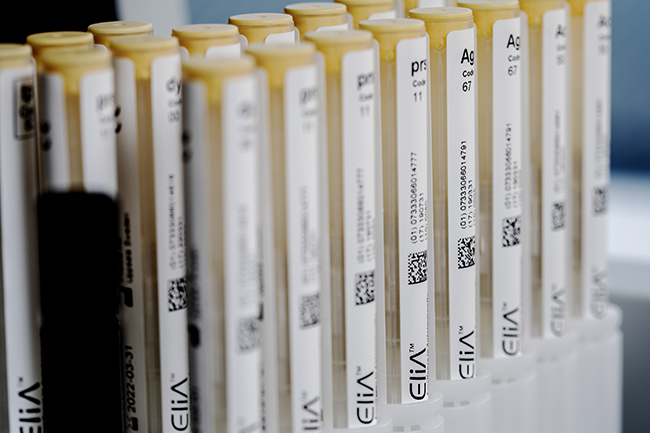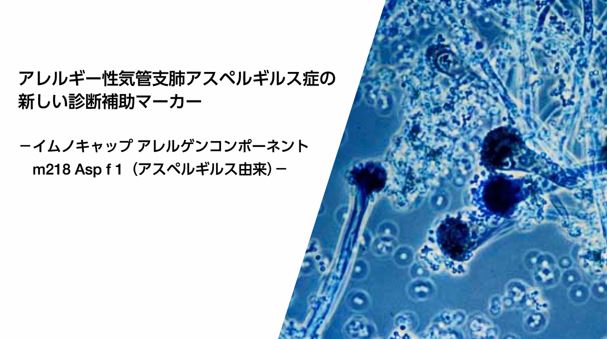Library
No Results Found. Please try clearing your filters.

Update on EU IVDR: Identifying opportunities and challenges for medical laboratories on their way to IVDR implementation
Prof. Dr. Folker Spitzenberger, Lübeck, provides insights into the latest EU Regulatory framework for IVDR medical devices and medical laboratory testing.
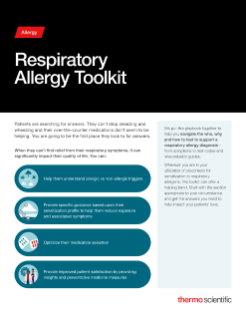
Respiratory Allergy Toolkit
We put this playbook together to help you navigate the who, why and how to test to support a respiratory allergy diagnosis – from symptoms to test codes and interpretation guides.

New
患者さん向けポスター「春の花粉ポスター」
春の花粉症の原因となる花粉や関連する症状、花粉症の人にみられる「花粉‐食物アレルギー症候群」についてご紹介しております。待合室などに掲示いただけます。

New
春の花粉症リーフレット
春の花粉症診断には、スギやヒノキに加えてハンノキ、シラカンバの花粉も測定しましょう。 ハンノキや花粉‐食物アレルギー症候群(PFAS)など花粉アレルゲン測定の意義などご紹介しております。

The right test at the right time for the right patient in food allergy
Watch Thermo Fisher Scientific’s Session at the 2024 EAACI Food Allergy and Anaphylaxis meeting in Athens. Chaired by Prof. Ronald van Ree, Dr Olga Luengo and Dr. Stefania Arasi discuss the quantification relevance for choosing the right test in allergy diagnosis, how to follow-up in diagnostics to optimize patient management, and the usefulness and limitations of multiplex tests.

Symposium du CICBAA, 2024 : Anaphylaxie inexpliquée – aux frontières de la biologie
Nous avons divisé le symposium "Cas Remarquables en Allergie Alimentaire" en 3 vidéos. Il s'agit de la troisième et dernière vidéo de la série. Les Dr Margaux Sauvere et Etienne Beaudoin présentent un cas clinique remarquable qui illustre une réaction anaphylactique avec un bilan biologique atypique

Symposium du CICBAA, 2024 : Une pâtissière si près des menhirs
Nous avons divisé le symposium "Cas Remarquables en Allergie Alimentaire" en 3 vidéos. Il s'agit de la deuxième vidéo de la série. Les Dr Mathieu Lagassy et Martine Morisset présentent un cas clinique remarquable qui illustre une allergie alimentaire aux GRP dans l'ouest de la France

Symposium du CICBAA, 2024 : Connaissez-vous les Cyclophilines
Nous avons divisé le symposium "Cas Remarquables en Allergie Alimentaire" en 3 vidéos. Il s'agit de la première vidéo de la série. Le Dr Delphine Giusti établit une revue de la littérature sur les cyclophilines : une famille d'allergènes encore peu connue

患者さん向け小冊子 「便中カルプロテクチンって何だろう?」
便中カルプロテクチン検査の特長やどのような場合に検査を実施するのかについて説明しています。検査について患者さんにご説明いただく際などにご使用いただけます。

「高度な検査技術の推進:患者さん中心のイノベーション」
WEBメディアMed-Tech Innovation NewsにThermo Fisher Scientificが広告記事を掲載しました。免疫診断薬部門プレジデントのSanthoshよりアレルギーおよび自己免疫疾患領域における課題とそれを克服するための当社の取り組みについてご紹介しています。(英語コンテンツです)

Global Allergy Summit Uppsala, 2024: Furry animal allergy
Dr. Ann-Marie Schoos, Denmark, investigates the diagnostic and clinical challenges in furry animal allergy, on the findings of the COPSAC studies (Copenhagen Prospective Studies on Asthma in Childhood).

Global Allergy Summit Uppsala, 2024: Update on allergen components
Dr. Ronald von Ree, Netherlands, provides insights into latest findings around peanut allergy diagnosis, and why the choice of the right test matters.

Global Allergy Summit Uppsala, 2024: Serum tryptase from a lab perspective
Dr. Joana Vitte, France, lectures on the various mast-cell related conditions in which Serum tryptase analysis is indicated, and on the technical characteristics of tryptase determination.

Global Allergy Summit Uppsala, 2024: Alpha-Gal and meat allergy
Dr. Marianne van Hage, Sweden, discusses the clinical spectrum of red meat allergy, and the up-to-date diagnosis and management setup of the alpha-gal syndrome.

Global Allergy Summit Uppsala, 2024: Pollen food allergy syndrome (PFAS)
Dr. Olga Luengo, Spain, is providing details on the molecular basis of PFAS, as well as on established allergens playing a crucial role in its development, and which new protein families need to be considered.

Global Allergy Summit Uppsala, 2024: Follow-up testing in food allergy
Dr. Motohiro Ebisawa, Japan, explains the potential benefit of follow-up testing in food allergy, and how changes in IgE levels of food allergy patients under oral immunotherapy with Egg, milk and wheat can influence clinical management.

Global Allergy Summit Uppsala, 2024: Drug allergy
Dr. Lene Heise Garvey, Denmark, updates on diagnosis and management of drug allergies with focus on perioperative immediate hypersensitivity reactions.

Global Allergy Summit Uppsala, 2024: Venom allergy & anaphylaxis
Dr. Markus Ollert, Luxembourg, gives an update on why precision diagnostics is needed, and what will be crucial in the future to diagnose and manage insect venom allergies.

Global Allergy Summit Uppsala, 2024: Seasonal inhalant allergens
Dr. Lee H. Hilbourne, USA, discusses optimal allergen panels for evaluating patients, and how specific IgE testing supports better patient management.

Global Allergy Summit Uppsala, 2024: Pollen allergy in the United States
Dr. André Valcour, USA, provides insights into pollen allergy in the US, and how historical laboratory “big data” on sensitization is used to define the best test offerings.
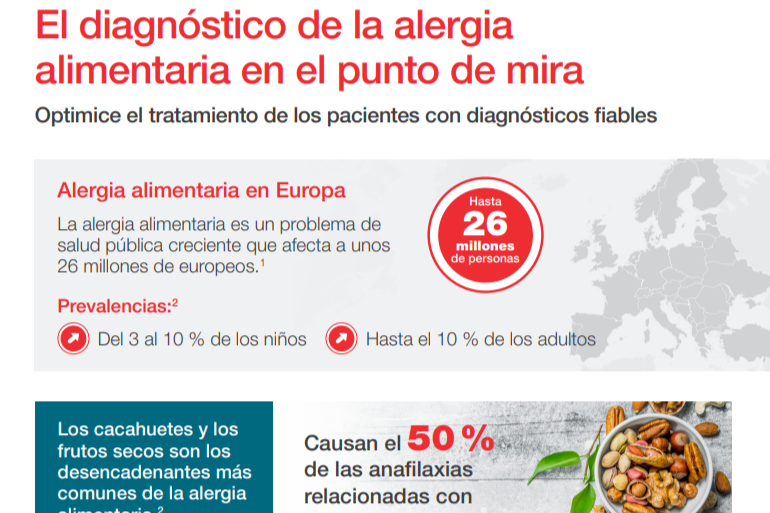
Diagnóstico y Manejo de Alergias Alimentarias
Conozca las directrices actualizadas de la EAACI para mejorar el diagnóstico y manejo de alergias alimentarias.
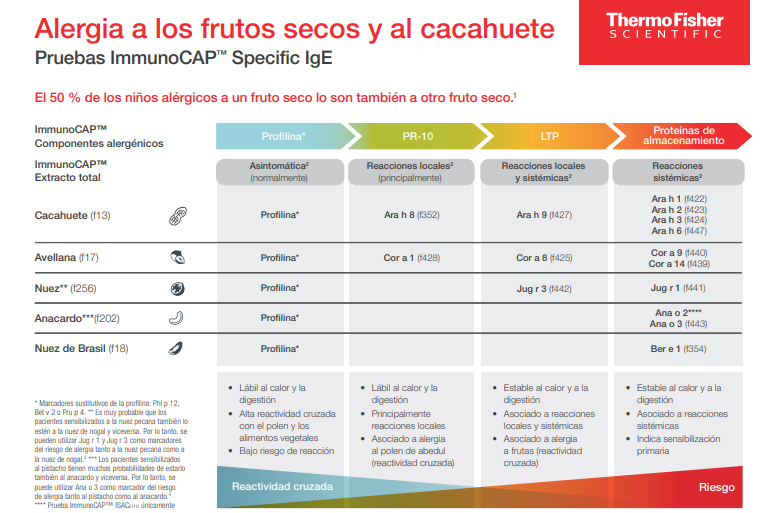
Diagnóstico de alergia a nueces y maníes
Cerca del 50% de los niños alérgicos a un tipo de nuez también son alérgicos a otro tipo de nuez (1). Con las pruebas ImmunoCAP™, puede obtener un análisis detallado, ofreciendo un diagnóstico preciso y un manejo seguro.
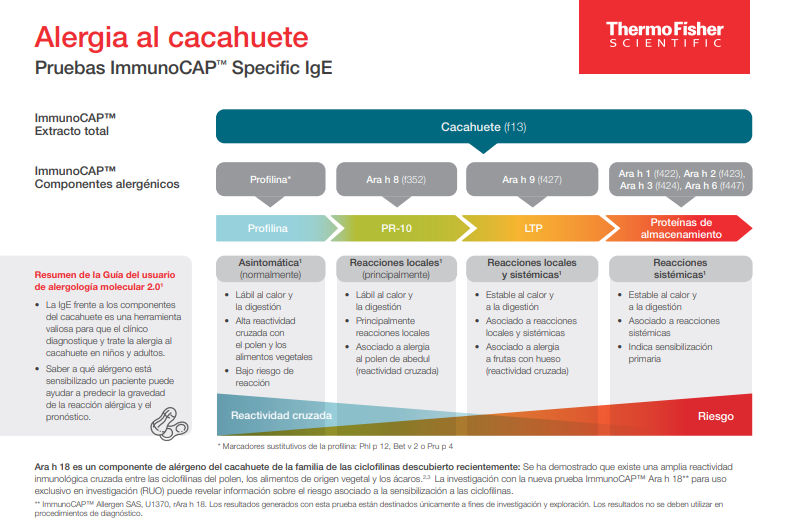
Entendiendo la Alergia al Maní
La alergia al maní puede variar desde reacciones locales hasta sistémicas graves. Las pruebas de IgE específicas identifican los componentes del alérgeno involucrados, ayudando a prever la gravedad de las reacciones y a ofrecer un manejo Seguro.
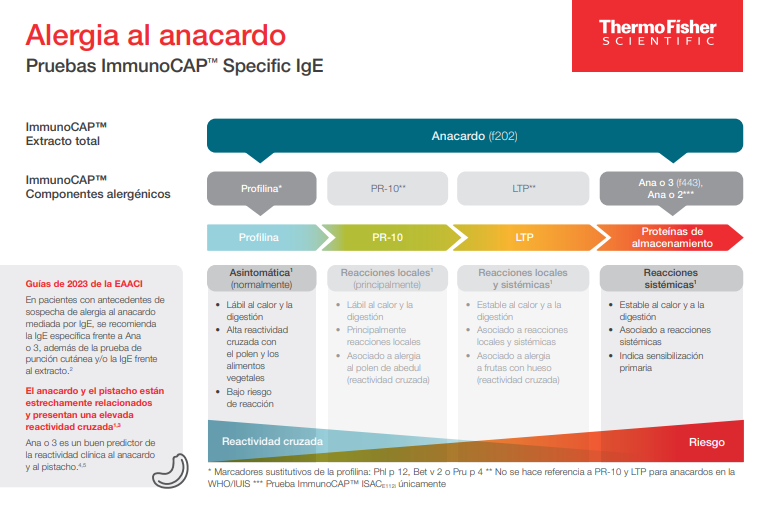
Entendiendo la Alergia al Anacardo
La alergia al anacardo puede estar asociada con reacciones cruzadas con pistacho (2). Las pruebas sanguíneas de IgE específicas son esenciales para un diagnóstico preciso y para orientar el tratamiento adecuado.
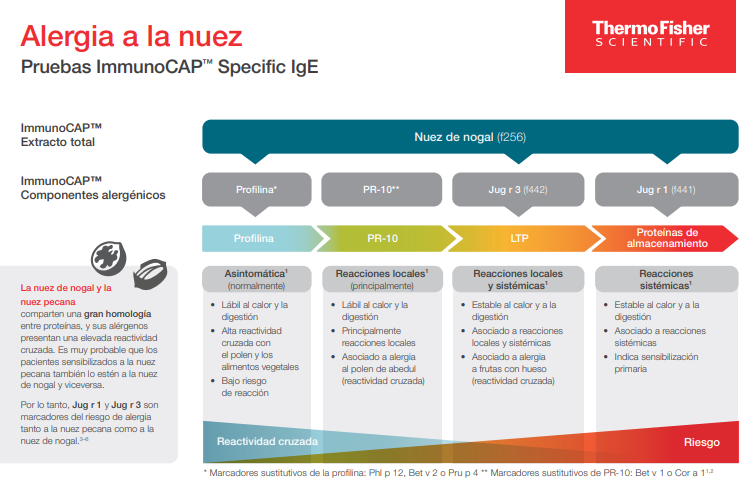
Entendiendo la Alergia a las Nueces
La alergia a las nueces puede causar reacciones locales y sistémicas, con un riesgo que varía según el tipo de alérgeno. Las pruebas de IgE específicas permiten la identificación precisa del alérgeno, ayudando en su manejo clínico.
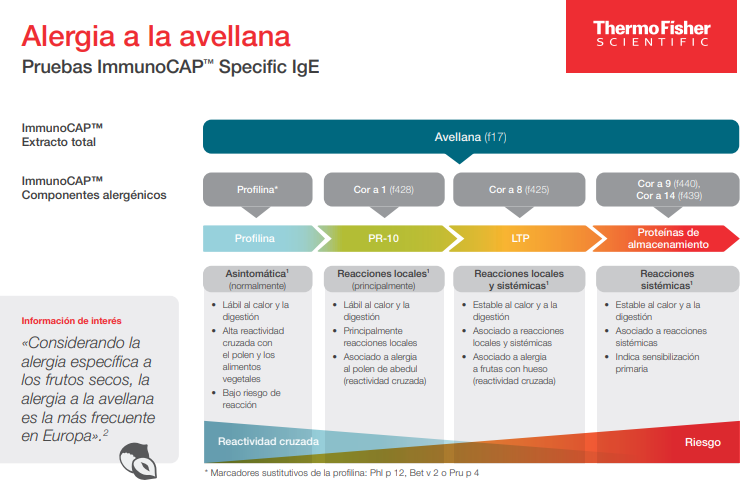
Entendiendo la Alergia a la Avellana
La alergia a la avellana es la más común en Europa y ha ido creciendo exponencialmente en LATAM, pudiendo causar reacciones locales y sistémicas. A través de las pruebas sanguíneas de IgE específicas es posible identificar la sensibilidad específica, identificando los componentes sin excluir productos de la dieta innecesariamente.
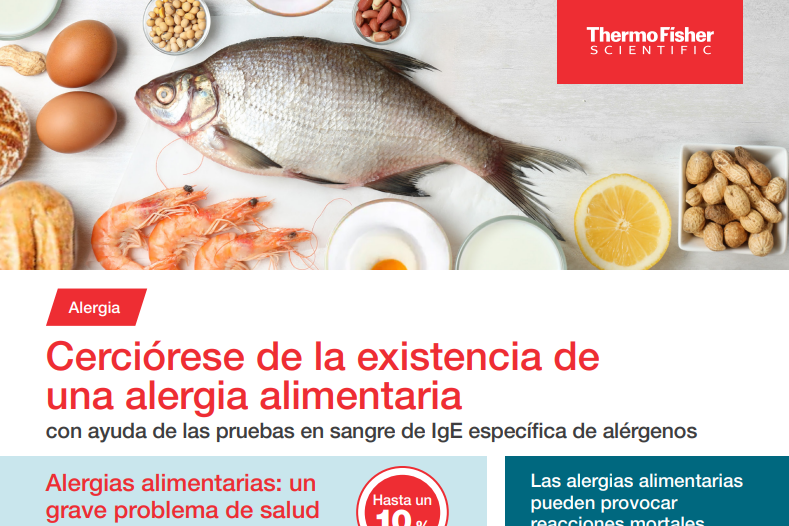
Principales dudas sobre la alergia alimentaria
Las alergias alimentarias afectan hasta al 10% de la población. Con un examen de sangre de IgE específico para alérgenos, es posible obtener un diagnóstico más completo y preciso. Conozca los beneficios de las pruebas ImmunoCAP™.
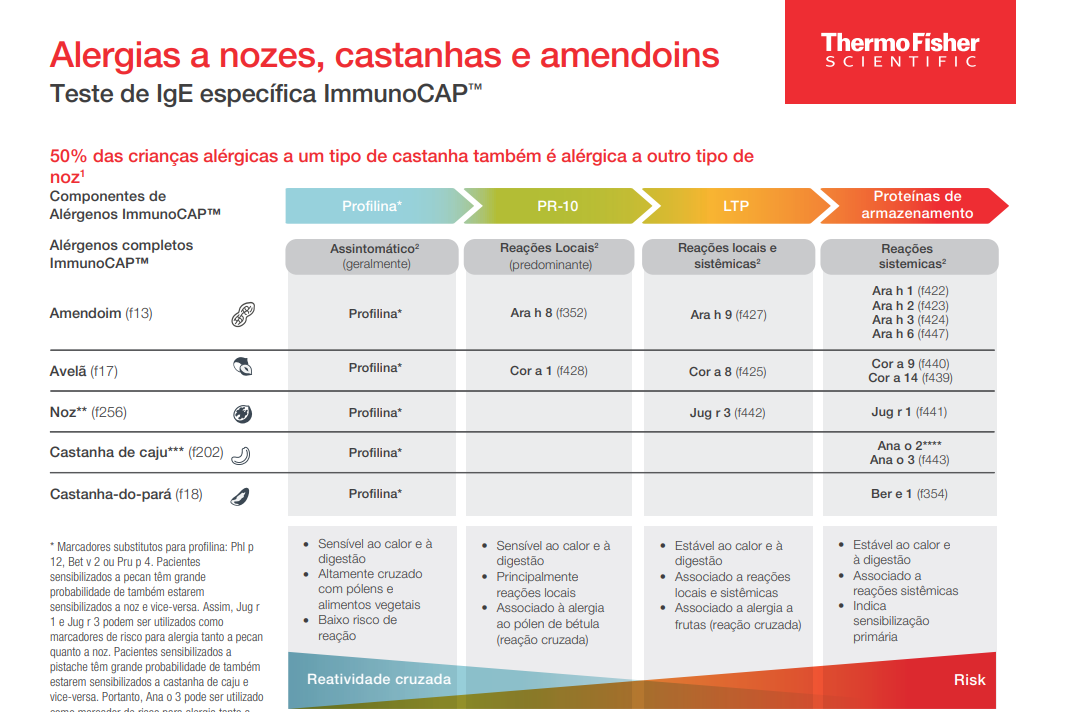
Diagnóstico de alergia a nozes e amendoins
Cerca de 50% das crianças alérgicas a uma noz também são alérgicas a outro tipo de noz (1). Com os testes ImmunoCAP™, você pode obter uma análise detalhada, oferecendo um diagnóstico preciso e um manejo seguro.
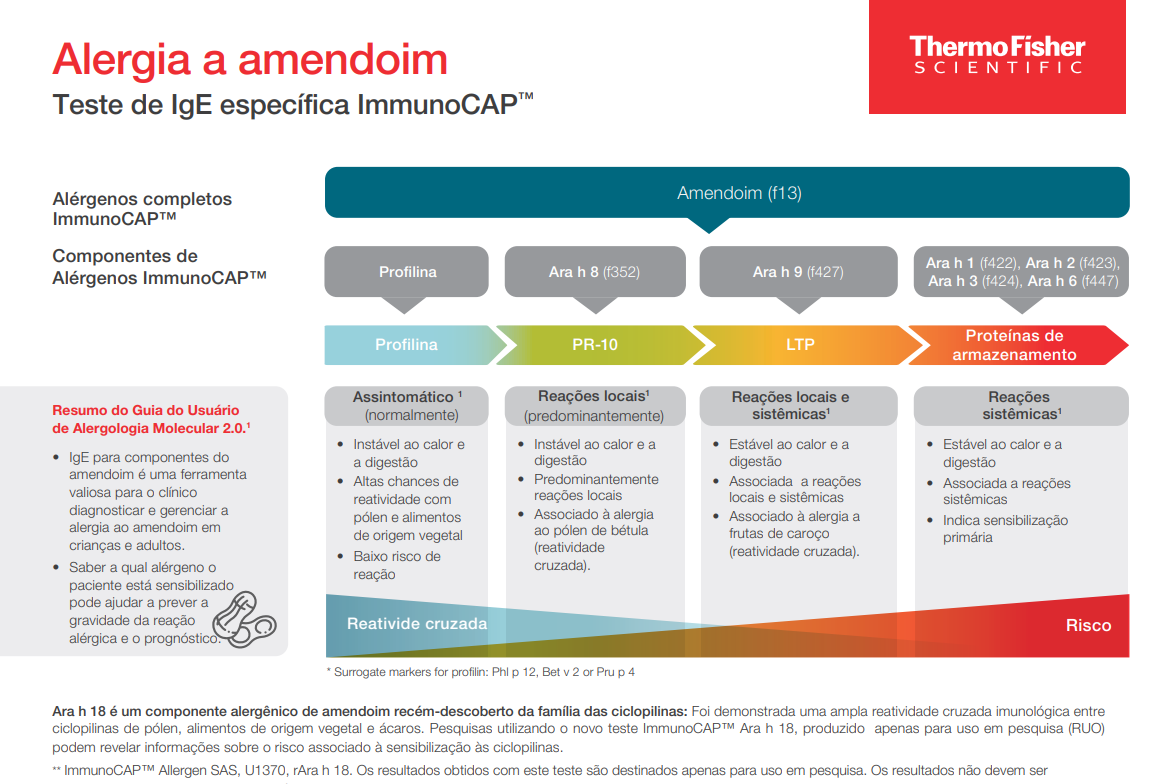
Entendendo a Alergia ao Amendoim
A alergia ao amendoim pode variar de reações locais a sistêmicas graves. Os testes de IgE específico identificam os componentes do alérgeno envolvidos, ajudando a prever a gravidade das reações e oferecer um manejo seguro.

Principais dúvidas sobre alergia alimentar
Alergias alimentares afetam até 10% da população. Neste cenário, um exame de sangue pode te ajudar a fazer um diagnóstico de alergia alimentar. Descubra os benefícios dos testes ImmunoCAP™.
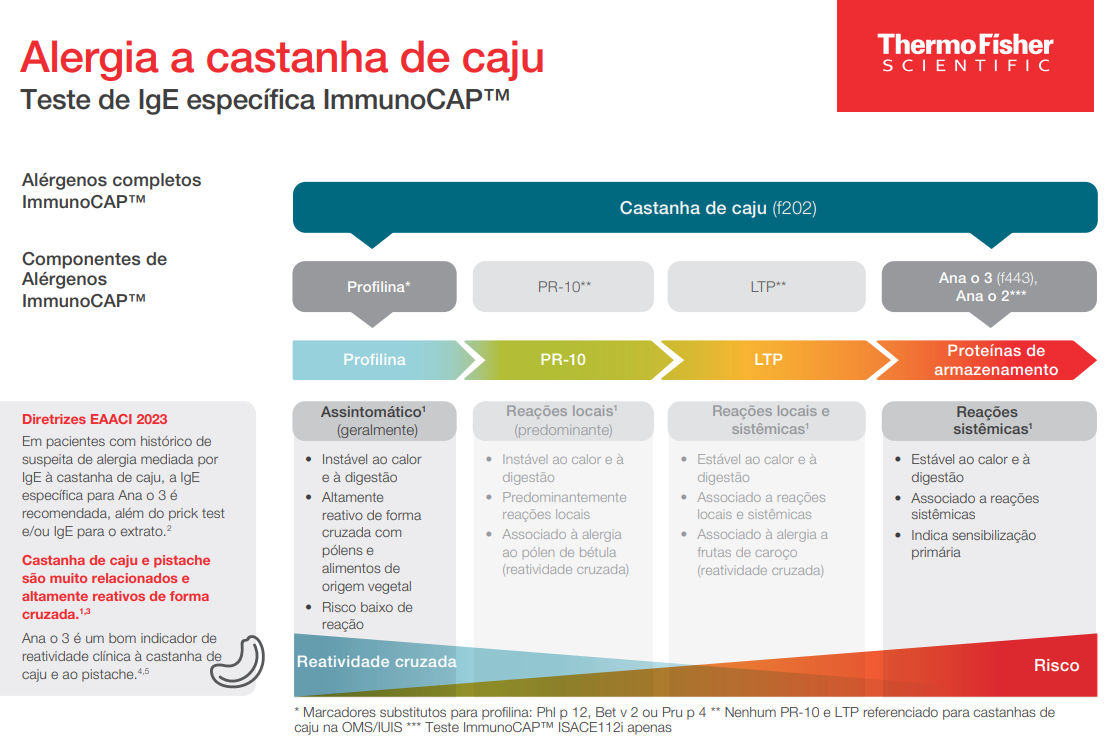
Entendendo a Alergia à Castanha de Caju
A alergia à castanha de caju pode estar associada a reações cruzadas com pistache (1). Os testes sanguíneos de IgE específico são essenciais para um diagnóstico preciso e para orientar o tratamento adequado.
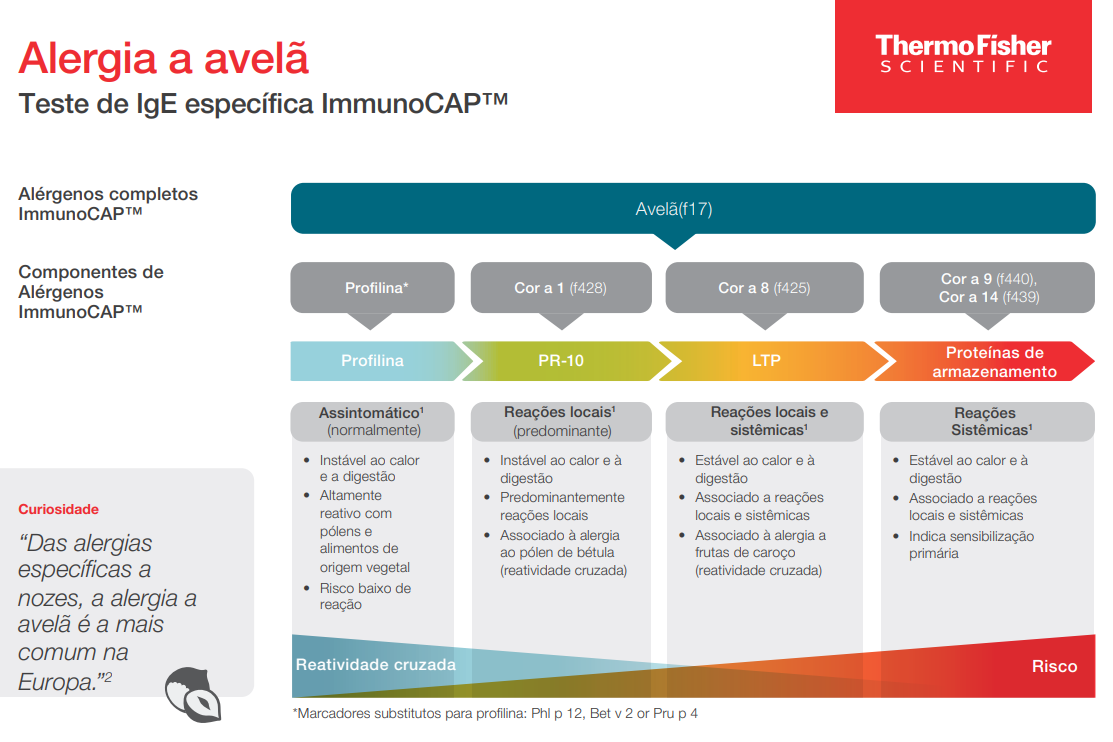
Entendendo a Alergia à Avelã
A alergia à avelã é a mais comum na Europa e vêm crescendo exponencialmente no Brasil, podendo causar reações locais e sistêmicas. Através dos testes sanguíneos de IgE específico é possível identificar a sensibilidade específica, identificando os componentes sem excluir produtos da dieta desnecessariamente.
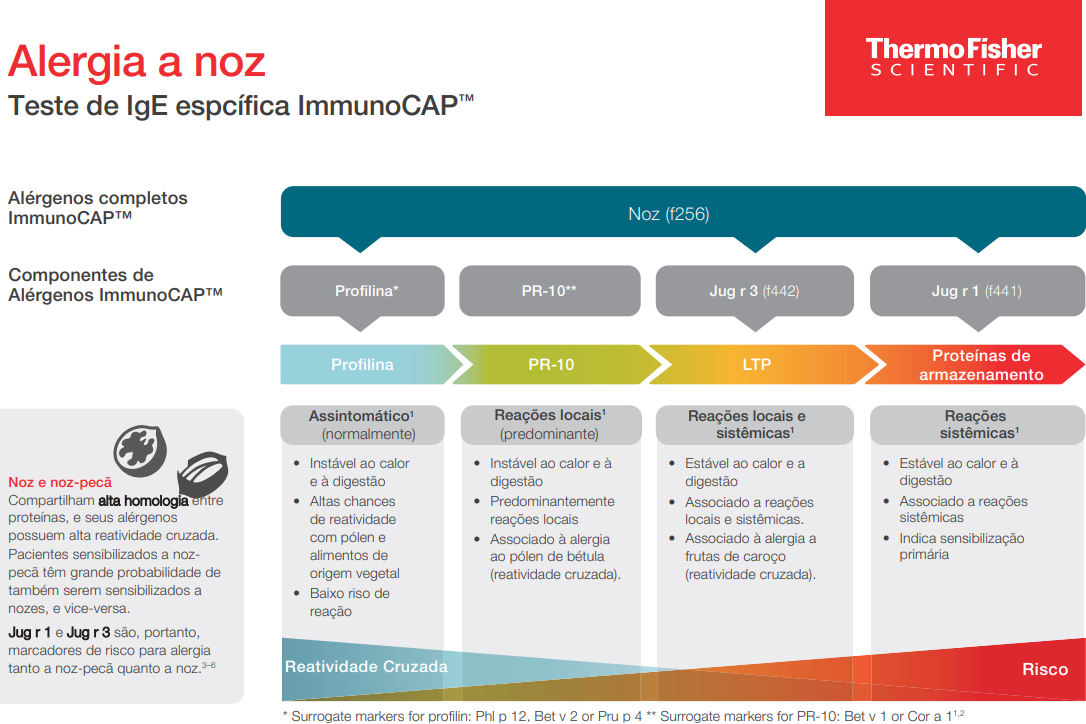
Entendendo a Alergia à Noz
Alergia à noz pode causar reações locais e sistêmicas, com risco que variam conforme o tipo de alérgeno. Testes de IgE específico permitem a identificação precisa do alérgeno, auxiliando seu manejo clínico.

Your timely approach to food allergy
Food Allergy eLearning interactive video for Allergy Specialists and HCPs.

食物アレルギー診療における特異的IgE抗体検査活用例~食物アレルゲンコンポーネント~
食物アレルギー診療で使用できるアレルゲンコンポーネントの活用例をご紹介しています。『食物アレルギー診療ガイドライン2021』掲載内容も反映しています。(監修:あいち小児保健医療総合センター センター長 伊藤 浩明先生)

Frame 2: Unlocking resilience: How to successfully navigate a systemic autoimmune rheumatic disease patient journey.
We have split the symposium into six short videos. This is the second video of the series. This video focuses on the management of referrals for ANA screening from the laboratory's perspective.

Frame 1: Unlocking resilience: How to successfully navigate a systemic autoimmune rheumatic disease patient journey.
During this first video, you will be introduced to the speakers and the overall topics covered throughout the six-video series. This video also includes an introduction to the patient's background and the initial steps she took on her journey before being referred to secondary care.

Frame 5: Unlocking Resilience: How to successfully navigate a systemic autoimmune rheumatic diseases patient journey
We have split the symposium into six short videos. This is the fifth video of the series. In this video the experts focus on the incidence of polyautoimmunity and its impact on patient diagnosis and disease management.

Frame 6: Unlocking resilience: How to successfully navigate a systemic autoimmune rheumatic disease patient journey.
We have split the symposium into six short videos. This is the sixth and final video of the series. This video concludes the series with a comprehensive review of current treatment options in systemic autoimmune rheumatic diseases (SARDs). It starts with the traditional use of hydroxychloroquine and progresses to the most recent developments, such as CAR T-cell therapy.

Frame 4: Unlocking resilience: How to successfully navigate a systemic autoimmune rheumatic disease patient journey.
We have split the symposium into six short videos. This is the fourth video of the series. This video features experts discussing how to interpret all the patient information together with test results to establish a final patient diagnosis.

Frame 3: Unlocking resilience: How to successfully navigate a systemic autoimmune rheumatic disease patient journey.
We have split the symposium into six short videos. This is the third video of the series. This video focuses on the second line clinical work-up, highlighting ENA test relevance and focusing on dsDNA testing. It provides insights from a laboratory standpoint regarding what clinicians should be aware of when it comes to testing for anti-dsDNA antibodies.

Improve Allergic Asthma Diagnosis with specific IgE Blood Testing
Allergic Asthma eLearning interactive video for HCPs

秋のアレルギーリーフレット
特異的IgE抗体検査の測定意義や秋に注意が必要なアレルゲンである花粉、昆虫(ガ・ゴキブリ)、カビの特徴および患者さんへ具体的な指導に活用できるアレルギー検査指導箋のご紹介など記載したリーフレットです。

Mejore el diagnóstico del asma alérgica con un análisis de sangre de IgE específica
Vídeo interactivo de eLearning sobre el asma alérgica para profesionales sanitarios

Migliora la diagnosi di asma allergico con i test ematici delle IgE specifiche
Video interattivo di eLearning sull'asma allergico per la medicina di base

Améliorer le diagnostic de l'asthme allergique grâce à des tests sanguins IgE spécifiques
Vidéo interactive d'apprentissage en ligne sur l'asthme allergique pour les professionnels de santé

Verbessern Sie die Diagnose von allergischem Asthma mit spezifischen IgE-Bluttests
Interaktives E-Learning-Video über allergisches Asthma für Ärzte

United Airway: Knowing the connection between diagnostics, allergy and patient management
Learn about the concept of united airway, rhinitis and asthma, and which aero allergens trigger respiratory diseases. Multi-sensitization, allergen load and exposure reduction will also be discussed.

How can I optimize my workflow to boost efficiency and productivity?
Workflow analysis and optimization is a strategy that allows labs to find and solve workflow efficiencies. Undertaking these brings multiple benefits to the diagnostic lab. Laboratories need to achieve more with less.

ImmunoCAP Allergenübersicht
Allergenliste aller Allergenextrakte und Allergenkomponenten nach Gruppen sortiert

EliA APS Klassifikationskriterien
EliA Tests auf Antiphospholipid-Syndrom (APS) nach den 2023 aktualisierten APS-Klassifikationskriterien

Zöliakie: Welche Symptome treten auf, wie stellt man die Diagnose und wie wird sie behandelt?
Dr. Martin Laaß, Leiter des Fachbereichs Kindergastroenterologie und Hepatologie am Universitätsklinikum Carl Gustav Carus in Dresden und Mitautor der Zöliakie-Leitlinie unterstützt Sie mit ausführlichen Informationen über diese unterdiagnostizierte Erkrankung. Dies wird Ihnen helfen, Ihre Patienten noch besser zu betreuen.

Maladie cœliaque: reconnaître les symptômes, diagnostiquer et prendre en charge vos patients
Le professeur Stéphane Schneider, gastroentérologue et professeur de nutrition, ainsi que Mme Brigitte Jolivet, présidente de l'Association Française Des Intolérants Au Gluten (AFDIAG), vous aideront à assurer une meilleure prise en charge de vos patients atteints de la maladie cœliaque

初夏から秋のアレルギーリーフレット
初夏から秋にかけて注意が必要なイネ科・雑草花粉、カビ、昆虫(ガ・ゴキブリ)アレルゲンについて解説しています。 原因の特定は、生活指導の基本となり患者さんとのコミュニケーションや治療に役立ちます。

難治性アレルギー性呼吸器疾患リーフレット
喘息に関与する主要なアレルゲンのスクリーニングとしてのViewアレルギー39、ABPAの診断補助としてのイムノキャップアレルゲンコンポーネント m218 Asp f 1(アスペルギルス由来)および鳥関連過敏性肺炎の診断補助としてイムノキャップ 特異的 IgG 鳥 の有用性などご紹介しています。

2024 International Congress on Autoimmunity
Watch the full recording of Thermo Fisher Scientific’s symposium at the International Congress on Autoimmunity 2024.

Valkuilen binnen de allergiediagnostiek
Worrecte diagnose van allergie is niet altijd makkelijk. Professor Ebo loodst u door enkele mogelijke valkuilen.

Vis, schaal- en schelpdieren allergie
Welke diagnostische tools zijn nodig om de correcte diagnose te stellen voor allergie voor vis, schaal- en schelpdieren? Professor Grosber geeft u in deze sessie een volledig overzicht

Correcte diagnose van latex allergy
Neem deel aan deze webinar waar Professor Lapeere de nodige tools voor een correcte diagnose van latexallergie zal bespreken.

ImmunoCAP™ ISAC en klinische relevantie
Inge De Cuyper en Dokter Dobbelaere bespreken u in deze webinar de relevantie van onze ImmunoCap Isac voor uw allergische patiënten.

prevalentie van voedselallergie in Europa: welke diagnostische tools zijn nodig?
Prof. Ronald van Ree bespreekt de prevalentie van voedselallergie in Europa bespreekt en welke diagnostische tools nodig zijn

Huisdierallergie en astma
Neem deel aan deze webinar waar Dr. Tuyls de diagnostiche tools voor huisdierallergie zal bespreken en een correcte behandeling zal voorstellen

Huisstofmijtallergie en astma
Neem deel aan deze webinar waar Dr Hardeman u meer zal vertellen over de diagnose huisstofmijtallergie en de link met astma

Het correcte gebruik van tryptase bepaling in de klinische praktijk
Wat is het correcte gebruik van Tryptase in uw klinische praktijk? Professor Ebo en Professor Sabato begeleiden u in deze webinar.

diagnostiek en behandeling van uw hooikoortspatiënt
Professor Gevaert gidst u in deze webinar door de diagnose en correcte behandeling van hooikoorts

Onderhoud van uw Phadia™ 250 systeem
Luister naar onze applicatiespecialisten Mireille van Kranenburg en Ief Mattheus en leer alles over uw Phadia 250 instrument: tips en tricks

ReCAPtulando nº 61
Saiba mais sobre a relevância do Fel d 1 na alergia a gato e a importância da soja nas alergias a leguminosas

Coeliakie en tarwe-allergie
Het verschil tussen Coeliakie en tarwe-allergie is niet altijd heel duidelijk. Dr. Claeys geeft u in deze webinar een volledig en duidelijk overzicht

Dose a triptase sérica duas vezes Brackground
Recursos que explicam a importância de dosear a triptase num cenário de urgência, sempre que houver suspeita de reação alérgica grave.

Phadia Laboratory Systems
Eficiência operacional para qualquer tamanho de laboratório permitindo um fluxo de trabalho otimizado.

ReCAPtulando nº 60
Saiba mais sobre os componentes de alérgenos do ovo na alergia alimentar e sobre a relevância clínica do componente Der p 23 na alergia a ácaro

Dose a triptase sérica duas vezes Infográfico
Recursos que explicam a importância de dosear a triptase num cenário de urgência, sempre que houver suspeita de reação alérgica grave.

L‚mina ImmunoCAP ISAC E112i
Obtenha respostas únicas para alergias complexas com o teste ImmunoCAP E112i.

Doser deux fois la tryptase Fiche d'information
Documents expliquant l'importance du dosage de la tryptase en situation aiguë dès lors qu'une réaction allergique sévère est suspectée.

Joyeuses fêtes…aux allergènes !
Théorie et pratique en allergologie moléculaire : Cas cliniques détaillés

Le dosage des IgE pour les nuls : mise en pratique des nouvelles recommandations
Théorie et pratique en allergologie moléculaire : Cas cliniques détaillés

Interprétation des résultats de tryptase : mise à jour 2022 et nouvelles valeurs de référence
Au cours de cette session, le Docteur Joana Vitte vous permettra de découvrir :
Les nouvelles frontières de la mesure de la tryptase
L'évolution des percentiles de tryptase
Les indications cliniques de la tryptase dans la pratique quotidienne
Le rôle des laboratoires dans le dosage de la tryptase

Le pour et le contre de l'utilisation des tests d’allergènes moléculaires dans l'asthme
Théorie et pratique en allergologie moléculaire : Cas cliniques détaillés

Jornal de ImunodiagnÛsticos - DetecÁ„o de anti-Sm
Anticorpos anti-Sm
Detecção de anticorpos anti-Sm
Avaliação do novo teste EliA SmDP-S

Prise en charge des douleurs articulaires en 2022
Théorie et pratique en maladies auto-immunes : Cas cliniques détaillés

Diagnostic et suivi des maladies inflammatoires chroniques de l'intestin
Théorie et pratique en maladies auto-immunes : Cas cliniques détaillés

Maladie cœliaque de l’adulte et hypersensibilité au gluten. Comment faire le diagnostic?
Théorie et pratique en maladies auto-immunes : Cas cliniques détaillé.

Algorithme Pollen CyprËs
Algorithme pour aider dans la prise en charge de l'allergie au pollen de Cyprès

Doser deux fois la tryptase Infographie
Documents expliquant l'importance du dosage de la tryptase en situation aiguë dès lors qu'une réaction allergique sévère est suspectée.

Brochure Quality Club
Description du service Phadia d'évaluation externe de la qualité : Quality Club

L'allergie aux guêpes abeilles polistes frelons asiatiques
Théorie et pratique en allergologie moléculaire : Cas cliniques détaillés

Brochure EliAô DFS70
Brochure de présentation du marqueur DFS 70 : répondre au défi de résultats positifs en HEp-2

Comprendre l'essentiel de l'allergologie moléculaire : les 4 recommandations de la SFA
Théorie et pratique en allergologie moléculaire : Cas cliniques détaillés

Les anaphylaxies nocturnes : un nouveau défi diagnostique
Théorie et pratique en allergologie moléculaire : Cas cliniques détaillés

Allergie aux curares : Quoi de neuf ?
Théorie et pratique en allergologie moléculaire : Cas cliniques détaillés

Mise à jour sur l’allergie aux fruits à coque
Théorie et pratique en allergologie moléculaire : Cas cliniques détaillés

Pru p 7 information commande
Information pour commander l'allergène moléculaire Pru p 7 dans la cadre d'allergie à la pêche

L’allergie aux protéines de lait de vache, du diagnostic à la réintroduction
Théorie et pratique en allergologie moléculaire : Cas cliniques détaillés

Maladie cœliaque, syndrome de l’intestin irritable et maladies inflammatoires chroniques de l’intestin (MICI)
Théorie et pratique en maladies auto-immunes

Les anaphylaxies aux PR10 : du diagnostic à la pratique
Théorie et pratique en allergologie moléculaire : Cas cliniques détaillés

Diversification alimentaire et risques allergiques
Théorie et pratique en allergologie moléculaire : Cas cliniques détaillés

La maladie cœliaque, un challenge diagnostique
Théorie et pratique en maladies auto-immunes : Cas cliniques détaillés

Le printemps est de retour : Que cachent réellement les symptômes de rhinite ?
Théorie et pratique en allergologie moléculaire : Cas cliniques détaillés

ImmunoCAP Allergène moléculaire f449 rSes i 1, le nouveau “sésame” du diagnostic allergologique moléculaire
Théorie et pratique en allergologie moléculaire : Cas cliniques détaillés

Examens biologiques en allergie : optimiser la prescription à la lumière des nouvelles recommandations de la SFA
Théorie et pratique en allergologie moléculaire : Cas cliniques détaillés

Aspects cliniques et utilité des IgG spécifiques pour le diagnostic des pneumopathies d'hypersensibilité
Epidémiologie et manifestations cliniques, antigènes responsables, précipitines et IgG spécifiques

Brochure Services
Description des différents Services que Thermo Fisher propose en tant que partenaire

Les protéines régulées par la gibberelline et l’allergène moléculaire Pru p 7
Théorie et pratique en allergologie moléculaire : Cas cliniques détaillés

Medición de triptasa dos veces Backgrounder
Materiales explicando la importancia de medir triptasa en la fase aguda cuando se sospeche de reacción alérgica grave

Algoritmos de las pruebas EliA
Comprehensive overview of test algorithms to support autoimmunity diagnostics with focus on EliA™ tests.

Pruebas EliATM para la Enfermedad CelÌaca
Catálogo de pruebas EliATM para el diagnóstico de la enfermedad Celíaca

Medición de triptasa dos veces - Infográfico
Materiales explicando la importancia de medir triptasa en la fase aguda cuando se sospeche de reacción alérgica grave

Pruebas EliATM para las Enfermedades del tejido conjuntivo
Catálogo de pruebas EliATM para el diagnóstico de las enfermedades del tejido conjuntivo

Vyšetření komponentových specifických IgE diagnostiku zkvalitní, ale neusnadní – kazuistiky z potravinové senzibilizace
Úskalí využití multiplexových testů při diagnostice potravinových alergií, důležitost správné interpretace výsledků.

Racionálna interpretácia výsledkov špecifických IgE protilátok v diagnostike alergie na mliečne a vaječné proteíny u dojčiat a batoliat
Souhrnný přehled vyšetřování alergií na mléko a vejce u dětí s využitím komponentové diagnostiky

Consejos para reducir la exposiciÛn a aeroalÈrgenos
Consejos para reducir la exposición a aeroalérgenos

IgG4 - stále tajemná "blokující" protilátka
Přehledná přednáška o možných funkcích IgG4 protilátek v lidském těle

Vivir con alergia al trigo
Consejos para reducir la exposición al trigo en pacientes alérgicos a este alimento

Molekulárna alegológia v praxi pediatra
Diagnostické postupy s využitím komponentových testů, kazuistiky z Dětské nemocnice v Bratislavě

Umíme správně indikovat a vyhodnocovat výsledky specifického IgE?/Are we able to indicate and evaluete sIgE results in the right way?
Jaké jsou benefity kvantitativních výsledků sIgE pro diagnostiku a léčbu alergických pacientů a jak s jejich pomocí identifikovat primární alergen? Využití poznatků z projektu INTEGRA.

Celiachia: Test EliA Celikey IgA
Sierologia celiaca su cui puoi fare affidamento per ridurre il numero di endoscopie

Accuratezza nella diagnosi delle diverse reazioni avverse al grano
Il Prof. Carlo Catassi illustra il percorso diagnostico ottimale del paziente affetto da reazioni avverse al grano, responsabile di diverse patologie: Celiachia, NCGS, IBD e Allergia Alimentare.

Artrite Reumatoide: Test EliA CCP ed EliA RF per singoli isotipi
Ottieni il risultato corretto, al primo dosaggio. Test EliA CCP ed EliA RF per singoli isotipi– ottieni sempre risultati precisi e riproducibili con i nostri test per l’artrite reumatoide.

Anafylaxe, tryptáza a její diagnostické využití v praxi/Anaphylaxis, tryptase and it´s diagnostic use in practice
Profesor Jeseňák a docent Kučera hovoří o tryptáze a její úloze v diagnostice závažných alergických reakcí a onemocnění žírných buněk. Zaměřili se také na praktické využití u klinických případů.

Scopri lo strumento dedicato alle allergie e alle malattie autoimmuni
Scopri lo strumento dedicato alle allergie e alle malattie autoimmuni

Scopri lo strumento dedicato ai professionisti sanitari
Scopri lo strumento dedicato ai professionisti sanitari

Il valore aggiunto delle soluzioni Thermo Fisher Scientific
I vantaggi di collaborare con il leader mondiale nella diagnosi delle allergie e delle malattie autoimmuni

ImmunoCAP Pru p 7 Scientific Backgrounder The role of Pru p 7 in severe peach allergy
"The role of Pru p 7 in severe peach allergy": ImmunoCAP Pru p 7 Scientific Backgrounder

Allergie? Test ImmunoCAP ISAC!
Allergie? Risposte ineguagliabili! Microarray di allergeni molecolari ImmunoCAP ISAC. Clinicamente rilevante. Clinicamente validato. Clinicamente dettagliato.

Vivere con uníallergia: pesce - frutti di mare
Consigli pratici su come vivere con un’allergia a pesce e/o frutti di mare

Vivere con uníallergia: frutta a guscio e arachidi
Consigli pratici su come vivere con un’allergia a frutta a guscio e arachidi

ImmunoCAP Allergen Peach Test Algorithm
Look deeper with the help of ImmunoCAP Allergen Component tests: ImmunoCAP Allergen Peach Test Algorithm

ImmunoCAP Rapid. » uníallergia? Presto ne saprete di pi˘.
È un’allergia? Presto ne saprete di più con ImmunoCAP Rapid.

ImmunoCAP Furry Animal Allergy - Scientific Backgrounder
Component-resolved diagnostics in pet allergy: ImmunoCAP Furry Animal Allergy - Scientific Backgrounder

Malattie Infiammatorie Croniche Intestinali (IBD): Test EliA Calprotectin 2
Riduci i costi del tuo laboratorio. Test EliA Calprotectin 2: escludere le malattie infiammatorie croniche intestinali (IBD) in modo corretto, al primo dosaggio

Diagnosi delle reazioni avverse agli alimenti. Dall’appropriatezza alla Medicina di Precisione.
Il Dott. Danilo Villalta illustra come, di fronte a quadri clinici di allergia alimentare, il percorso diagnostico possa avvalersi della Molecular Allergology nell’ottica della Medicina di Precisione.

Consigli per ridurre líesposizione agli allergeni aerei
Consigli per ridurre l’esposizione agli allergeni aerei

Algoritmo clinico: Allergia al latte vaccino
Allergia al latte vaccino: algoritmo clinico. Quali test eseguire?

Programma del Simposio Educazionale dal titolo "Nuove evidenze nella gestione del Connective Tissue Diseases Screening: il ruolo del Laboratorio", organizzato in occasione del 54° Congresso Nazionale

Algoritmo clinico: Allergia alla betulla
Allergia alla betulla: algoritmo clinico. Quali test eseguire?

Gestione delle malattie allergiche: Test ImmunoCAP
Test lmmunoCAP – il gold standard. Un portfolio di test affidabile per una migliore gestione delle malattie allergiche

Algoritmo clinico: Allergia alle arachidi
Allergia alle arachidi: algoritmo clinico. Quali test eseguire?

Malattie del Tessuto Connettivo: Test EliA CTD Screen
Una misurabile differenza. EliA CTD Screen, il test per lo screening di connettiviti autoimmuni clinicamente più rilevante, contribuisce a semplificare la diagnosi

Il percorso diagnostico del paziente affetto da allergia respiratoria stagionale: dal Primary care alla Medicina di precisione
Il Dott. Filippo Fassio illustra l’importanza di giungere ad una diagnosi differenziale e identificare con accuratezza i fattori scatenanti delle manifestazioni allergiche respiratorie stagionali, al fine di influenzare positivamente la QoL del paziente allergopatico e ridurre l’impatto sul SSN.

Vivere con uníallergia: latte vaccino
Consigli pratici su come vivere con un’allergia al latte vaccino

EliA CTD Screen
EliA CTD Screen, der klinisch aussagekräftigste und zuverlässigste CTD Screen hilft bei der Diagnosestellung

IVDR Flyer
Unser komplettes immundiagnostisches Portfolio ist schon IVDR-zertifiziert – lesen Sie, wie wir Sie während der Umstellung unterstützen.

ImmunoCAP Furry Animal Allergy
Broadest selection of sIgE tests using allergen components: ImmunoCAP Furry Animal Allergy

Phadia LabCommunity
Phadia LabCommunity ermöglicht die Kommunikation zwischen den Phadia Laborsystemen und dem Thermo Fisher Serviceteam.

Wie kann man Hausstaubmilben-Allergene am besten vermeiden?
Prof. Dr. med. Jörg Kleine-Tebbe, Allergie- und Asthma-Zentrum Westend in Berlin gibt Hilfestellung für Hausärzte zur Behandlung von Allergien und Asthma.

Welche Schlüsselfragen sollte man Asthma-Patienten stellen um herauszufinden, ob eine Allergie der Auslöser sein kann?
Prof. Dr. med. Jörg Kleine-Tebbe, Allergie- und Asthma-Zentrum Westend in Berlin gibt Hilfestellung für Hausärzte zur Behandlung von Allergien und Asthma.

Wann sollte die molekulare Allergiediagnostik eingesetzt werden?
Prof. Dr. med. Jörg Kleine-Tebbe, Allergie- und Asthma-Zentrum Westend in Berlin gibt Hilfestellung für Hausärzte zur Behandlung von Allergien und Asthma.

Allergiediagnostik in der Grundversorung - Anaphylaxie und serologische Allergiediagnostik
Anaphylaxie und serologische Allergiediagnostik

ImmunoCAP Tryptase bei Operationen
Tryptase, ein klinischer Marker zum besseren Verständnis schwerer Reaktionen auf Arzneimittel

ImmunoCAP Sesam-Allergie Diagnosekarte
Empfohlenes Testprofil für die Abklärung eines Allergieverdachts auf Sesam

Welche Allergene sind bei Verdacht auf eine Inhalationsallergie am wichtigsten zu testen?
Prof. Dr. med. Jörg Kleine-Tebbe, Allergie- und Asthma-Zentrum Westend in Berlin gibt Hilfestellung für Hausärzte zur Behandlung von Allergien und Asthma.

Labordiagnose der Zöliakie bei Kindern
ESPGHAN Guidelines 2020 für die Diagnose der Zöliakie - hohe diagnostische Genauigkeit bei geringer Belastung zur Unterstützung der Zöliakie-Diagnose bei Kindern

ImmunoCAP Allergen Pfirsich Diagnosekarte
Erweiterte Testung mit ImmunoCAP Allergenkomponenten-Tests

Haustierallergie
Spezifische IgE-Bluttests können helfen, die tatsächliche Ursache für allergische Symptome zu erkennen. Muss Ihr Patient sein Haustier wirklich weggeben?

Interstitielle Lungenerkrankungen bei Systemerkankungen
Interstitielle Lungenerkrankungen manifestieren sich oft mit diffusen Symptomen und Patienten benötigen eine interdisziplinäre Betreuung. Professor Kreuter informiert Sie über die aktuellen Entwicklungen der Diagnostik und Therapie.

EliA Celikey Test auf anti-tTG: wissenschaftliche Evidenz durch internationale Studie
Die ProCeDe Studie (2019) bestätigt den Verzicht auf Biopsien für die Zöliakiediagnose bei Kindern dank herausragenden Leistungsdaten des EliA Celikey IgA Tests.

EDI ermˆglicht optimierten Einkaufsprozess für Labore
Mit der Labor-Schnittstelle Electronic Data Interchange (EDI) können Einkaufsprozesse digitalisiert werden – flexibel von der Bestellung bis zur Rechnung.

Vorstellung Phadia 200 und Phadia 250
Phadia Laborsysteme bieten Anwendern volle Flexibilität bei der Diagnostik für Allergien und Autoimmunerkrankungen. Erfahren Sie hier mehr über das Phadia 200 und das Phadia 250

EliA SmDP-S Test
Ein integraler Bestandteil Ihres Diagnose-Algorithmus für systemischen Lupus erythematodes.

Allergie-Diagnostik in der Dermatologie
14. Wiener Komponentenschule 2022: Doz. DDr. Sabine Altrichter gibt einen Überblick zur Allergologie in der Dermatologie

EliA DFS70 Test
Zur Unterstützung bei anspruchsvollen positiven ANA HEp-2 Ergebnissen durch einen möglichen Ausschluss von Kollagenosen.

Diagnostik der Medikamentenallergie
Neben vorhersehbaren Nebenwirkungen haben Arzneimittel manchmal auch unvorhersehbare Nebenwirkungen, die eine Neigung für Überempfindlichkeitsreaktionen voraussetzen. Lernen Sie hier mehr dazu.

ImmunoCAP Tryptase bei Insektengiftallergie
Tryptase als klinischer Marker zur Klärung schwerer Reaktionen

Zöliakiediagnostik: EliA Celikey IgA-Test
Eine zuverlässige serologische Zöliakiediagnostik kann Endoskopien vermeiden.

Wann besteht der Verdacht auf eine Inhalationsallergie?
Prof. Dr. med. Jörg Kleine-Tebbe, Allergie- und Asthma-Zentrum Westend in Berlin gibt Hilfestellung für Hausärzte zur Behandlung von Allergien und Asthma.

24 library_link_label String Produktkatalog 2022 false false false false
Thermo Fisher Scientific ist ein führender Anbieter von In-vitro-Diagnostik-Tests im Bereich Allergie- und Autoimmundiagnostik. Hier erhalten Sie einen Überblick über unsere Produkte.

Verbesserte Diagnose einer Sesam-Allergie mit Ses i 1
Wissenschaftliche Hintergrundinformationen zur Diagnose und Behandlung einer Sesam-Allergie

Kann die molekulare Allergiediagnostik auch bei Nahrungsmittelallergie hilfreich sein?
Prof. Dr. med. Jörg Kleine-Tebbe, Allergie- und Asthma-Zentrum Westend in Berlin gibt Hilfestellung für Hausärzte zur Behandlung von Allergien und Asthma.

Bestimmen Sie den Tryptase-Wert zweimal Infografik
Hintergrundinformation zur Erklärung der Wichtigkeit einer Tryptase-Bestimmung in der Akutmedizin bei Verdacht auf eine schwere allergische Reaktion

Zöliakie und Begleiterkrankungen bei Kindern
Die Entwicklung des Krankheitsbildes der Zöliakie in den letzten 50 Jahren

Video EliA Stool Extraction Kit plus
Einfache und schnelle Probenextraktion ohne Zentrifugation zur Verwendung mit dem EliA™ Calprotectin 2 Test. Messen Sie Calprotectin in humanem Stuhl zur Unterstützung der klinische Diagnose von CED.

ImmunoCAP Rapid Adult Patientenbroschüre
In dieser Broschüre finden Sie Hintergrundinformationen zu den einzelnen getesteten Allergenen und Tipps, wie Sie diese bestmöglich meiden können

Allergiediagnostik in der Grundversorung - Serologische Allergiediagnostik und Desensibilisierungen
Serologische Allergiediagnostik und Desensibilisierungen

Felltierdiagnostik: Muss das Haustier wirklich weg?
Felltiere,vor allem Katzen, gehören neben Milben und Pollen zu den wichtigsten Allergieauslösern. Man weiß, dass die Exposition die Sensibilisierungsmuster beeinflusst. Lernen Sie hier mehr dazu.

Milbe und Schimmel: Bekanntes und Neues zu den ganzjährigen Problemverursachern
Eine frühe Erkennung von Milben- und Schimmelsensibilisierungen ist essenziell, um durch vorbeugende Maßnahmen und Therapien der Entwicklung schwerer Erkrankungen entgegenzuwirken.

Kompakte Darstellung von Testalgorithmen für die Unterstützung in der Autoimmundiagnostik für alle, die sich im Berufsalltag mit der Autoantikörperdiagnostik beschäftigen.

Zusammenfassung der Plenary-Session "PL03"präsentiert am virtuellen 12 International Congress on Autoimmunity 2021

SIT, VIT, AIT, OIT – ein Update
14. Wiener Komponentenschule 2022: Folgen Sie dem Vortrag von Doz. Dr. Petra Zieglmayer für ein Update zu den verschiedenen allergenspezifischen Immuntherapien.

Welche Allergiediagnostik empfehlen Sie einem Allgemeinmediziner?
Prof. Dr. med. Jörg Kleine-Tebbe, Allergie- und Asthma-Zentrum Westend in Berlin gibt Hilfestellung für Hausärzte zur Behandlung von Allergien und Asthma.

Go Molecular - Die Grundlagen (Teil 1)
Ein klinisches Handbuch für die molekulare Allergiediagnostik – grundlegende Einführung mit Schwerpunkt auf Nahrungsmittelallergien

EliA Calprotectin 2: optimierte Stuhlextraktion
Optimiertes Stuhlextraktionsverfahren für eine effiziente Probenvorbereitung und -testung von fäkalem Calprotectin

EliA CCP und EliA RF-Isotypen
Für präzise, reproduzierbare Ergebnisse mit den leistungsstärksten Tests auf rheumatoide Arthritis

Allergie: Pathomechanismus, Diagnose und Therapie
14. Wiener Komponentenschule 2022: Prof. Dr. Rudolf Valenta gibt einen Überblick über allergische Erkrankungen, von der Pathogenese bis zu Diagnostik und Therapie

Asthma Diagnosealgorithmus
Empfohlene Testprofile für die Abklärung eines Allergieverdachts bei Asthma

ICA-Zusammenfassung "Systemischer Lupus erythematodes"
Zusammenfassung der Session "The diversity of SLE presentation"
präsentiert am virtuellen 12th International Congress on Autoimmunity 2021

Allergenkomponenten und Kreuzreaktionen
Alle ImmunoCAP Allergenkomponenten, mögliche Kreuzreaktionen und wichtige Proteinfamilien in einer Übersicht

Serum-Tryptase: Mastzellmarker von Anaphylaxie bis Mastozytose
Dieses Seminar bietet einen Überblick über Serumtryptase, ihre Rolle in klinischen Fragestellungen wie Anaphylaxie, Mastozytose, klonale Mastzellerkrankungen oder hereditäre α-Tryptasämie.

EliA SmDP-S: Warum verwenden wir das SmD3 Peptid?
Das synthetisch hergestellte SmD3 Peptid enthält nur das relevante Epitop, ist frei von Proteinkontaminationen und ist somit der spezifischste Marker für Sm bei der Diagnosefindung auf SLE.

Go Molecular - Die Allergenkomponenten (Teil 2)
Ein klinisches Handbuch für die molekulare Allergiediagnostik – Übersicht der Allergenkomponenten und deren klinische Relevanz

Welche Symptome sind ein Hinweis auf allergisches Asthma?
Prof. Dr. med. Jörg Kleine-Tebbe, Allergie- und Asthma-Zentrum Westend in Berlin gibt Hilfestellung für Hausärzte zur Behandlung von Allergien und Asthma.

ImmunoCAP EDN Test für Forschungszwecke
Produktinformation zu ImmunoCAP Eosinophil Derived Neurotoxin (EDN) Test für Forschungszwecke

Diagnostik und Management des allergischen Asthma Bronchiale: ein Prasixupdate
14. Wiener Komponentenschule 2022: Dr. Anna Zschocke gibt einen Überblick zu Diagnostik und Management des allergischen Asthma Bronchiale

Welche Allergene sind bei Verdacht auf eine Nahrungsmittelallergie am wichtigsten zu testen?
Prof. Dr. med. Jörg Kleine-Tebbe, Allergie- und Asthma-Zentrum Westend in Berlin gibt Hilfestellung für Hausärzte zur Behandlung von Allergien und Asthma.

Allergie: Pathomechanismus, Diagnose und Therapie
In diesem Seminar gibt Prof. Rudolf Valenta einen Überblick über allergische Erkrankungen, von der Pathogenese über die Diagnostik bis zur Therapie.

Bestimmen Sie den Tryptase-Wert zweimal Infografik
Infografik zur Erklärung der Wichtigkeit einer Tryptase-Bestimmung in der Akutmedizin bei Verdacht auf eine schwere allergische Reaktion

ICA-Zusammenfassung "Das komplexe Zusammenspiel von COVID-19 mit verschiedenen Autoantikörpern"
Zusammenfassung der Plenary-Session "Covid-19"
präsentiert am virtuellen 12th International Congress on Autoimmunity 2021

Zusammenfassung der Session "PS26 - Novelties in Systemic Sclerosis"
präsentiert am virtuellen 12th International Congress on Autoimmunity 2021

Allergiediagnostik in der Grundversorung - Diagnostik von Inhalationsallergien
Diagnostik von Inhalationsallergien

Der Aufwand lohnt sich: Fälle aus der klinischen Praxis
In diesem Seminar wird eine Reihe spezieller allergologische Fallstudien präsentiert, welche den praktischen Nutzen der Komponentendiagnostik aufzeigen.

ImmunoCAP™ ISAC Test und Komponentendiagnostik: klinische Fälle
14. Wiener Komponentenschule 2022: Prof. Dr. Peter Schmid-Grendelmeier erläutert an Hand klinischer Fälle den Nutzen der Multiplex-Komponentenanalyse

Wann besteht der Verdacht auf eine Nahrungsmittelallergie?
Prof. Dr. med. Jörg Kleine-Tebbe, Allergie- und Asthma-Zentrum Westend in Berlin gibt Hilfestellung für Hausärzte zur Behandlung von Allergien und Asthma.

ImmunoCAPô Tryptase - sever reactions to drugs during surgery
Learn more about how ImmunoCAP Tryptase can help explain the severe reactions occurred during surgery and anesthesia.

EliA Produktliste
Klinisch relevante Tests bei Autoimmunerkrankungen auf vollautomatisierten Laborsystemen.

ImmunoCAP ECP bei Asthma
ECP-Bestimmung zur Einschätzung des Entzündungsgrad der Atemwege bei Asthma-Patienten

Update S3-Leitlinie: Diagnostische Vorgehensweise bei Verdacht auf Reizdarmsyndrom
Herr Professor Raithel gibt Ihnen einen Einblick, wie Sie Diagnosesicherheit bei Verdacht auf ein Reizdarmsyndrom erhalten und welche Differenzialdiagnostik entscheidend ist.

Warum kann es mit der Anamnese allein schwierig sein, die auslösenden Allergien zu finden?
Prof. Dr. med. Jörg Kleine-Tebbe, Allergie- und Asthma-Zentrum Westend in Berlin gibt Hilfestellung für Hausärzte zur Behandlung von Allergien und Asthma.

EliA Stool Extraction Kit plus
Einfache und schnelle Probenextraktion ohne Zentrifugation zur Verwendung mit dem EliA™ Calprotectin 2 Test. Messen Sie Calprotectin in humanem Stuhl zur Unterstützung der klinische Diagnose von CED.

ImmunoCAP Allergen Pfirsich Testalgorithmus
Erweiterte Testung mit ImmunoCAP Allergenkomponenten-Tests

Der lästige Heuschnupfen Wie Sie Ihre allergischen Patienten jetzt richtig diagnostizieren
Jedes Jahr kämpfen viele Patienten mit Pollenallergien. Unsere Expertin erklärt, warum es wichtig ist Heuschnupfen nicht zu unterschätzen und wie Sie der Ursache dafür auf den Grund gehen können.

第108回日本消化器病学会総会セミナー動画
第108回日本消化器病学会総会ランチョンセミナー「実践! 便中カルプロテクチン検査―潰瘍性大腸炎・クローン病の診断補助とモニタリング―」のセミナー動画です。

ImmunoCAP Specific IgE Wheat Components Compendium
ImmunoCAP menu offers one whole allergen wheat extract test and three allergen component tests. These tests help assess risk for severe reaction and may improve patient management by facilitating tailored avoidance recommendations

How labs and primary care can work together in diagnosing coeliac disease
Why are so many coeliac disease tests requested? How can the lab proactively help to find “hidden” patients? What does the new primary care guidance mean for the diagnostic pathway of coeliac disease?

The Allergy and Asthma Task Force Recommendations
Authors: Barbara P. Yawn, MD, MSc, FAAFP; Christine W. Wagner, APRN, MSN, AE-C; Allan Luskin, MD; Len Fromer, MD, FAAFP; Randall Brown, MD, MPH; Andrew Liu, MD; AE-C; Michael D. Cabana, MD, MPH; Ivor

Misura la triptasi due volte Backgrounder
Materiali che spiegano l'importanza di misurare la triptasi in fase acuta ogni volta che si sospetta una reazione allergica grave

LTP syndrome in Northern Europe – ‘What is this and how to diagnose and manage it'
How is it diagnosed in the clinic and how can it be managed?

Molecular Allergology series - Pollen allergy
This covers the cause of the most widespread allergic manifestation; rhinitis. The focus is on molecular allergology, IgE towards different protein families in pollens.

Molecular allergology insights 2022 - Idiopathic anaphylaxis - what do we know about the unknown?
Idiopathic anaphylaxis refers to episodes of unexplainable or spontaneous anaphylaxis. With a thorough diagnostic workup including molecular allergy serology, many of these cases can be explained.

Toward Earlier Diagnosis Using Combined eHealth Tools in Rheumatology
Publication referred to in our poster "1692 Joint pain assessment scoring tool"

EliA LMK-1 test
Discover flexible and automated testing for Autoimmune Hepatitis (AIH) type 2 with EliA LKM-1 test. Test enables the clinician to improve patients' quality of life.

Eosinophil-Derived Neurotoxin
Eosinophil-Derived Neurotoxin scientific backgrounder. In this document it is explained all the information regarding EDN and its relation to diseases in children and adults.

Molecular Allergology series - Peanut, tree-nuts and seeds
Molecular allergology provides serological markers to peanut and hazelnut allergy,allowing to discriminate between genuine food allergy, and cross reactions driven by pollen allergy.

Anti-dsDNA testing specificity for systemic lupus erythematosus - A systematic review
Join Dr. Marco Schreurs in his assessment of the available dsDNA tests to guide choice and interpretation of the optimal anti-dsDNA test strategy, fitting into the 2019 EULAR/ACR criteria for SLE.

ImmunoCAPô Tryptase - insect venom allergy
Learn more about how ImmunoCAP Tryptase can help support the clinical assessment of insect venom allergy, need fort therapy and guide venom immunotherapy (VIT) treatment.

Hereditary α-Tryptasemia (HαT): What clinicians need to know to improve allergy diagnosis and patient management
Learn more about HαT, which has been shown to increase the frequency and severity of anaphylaxis in specific settings, including insect stings and patients without identifiable causes for anaphylaxis

Living with allergy - Soy
Soy is a protein made from soybeans. A soy allergy is relatively rare compared to milk and chicken egg allergies. Fortunately, children are more likely to outgrow a soy allergy.

In Vitro Serum Specific-IgE Testing Alone Reduces Healthcare Utilization
Author: Rick Shrouds, MD, Medical Director of Molina Healthcare, South Carolina

From Bananas to Biologicals – Coeliac disease in the 21st Century
The history of Coeliac Disease and development of key diagnostic elements

Integration of in vitro test results for aid in the diagnosis and treatment of allergic patients
Learn about the concept of ratio calculation in the context of allergology, how ratios help to identify allergens underlying clinical manifestations, and how to implement it in diagnostic algorithms.

ImmunoCAPô Tryptase - mastocytosis
Learn more about how ImmunoCAP Tryptase can help to rule in or out systemic mastocytosis and guide VIT treatment.

An introduction to CE marking of IVD devices under EU IVDR
The objective is to bring you more clarity on what this regulation entails and and how we have ensured continued compliance of our IVD products.

ImmunoCAPô ISAC assay product overview
The ImmunoCAP ISAC assay is the clinically proven solution for investigating puzzling allergies. Clinically relevant, clinically validated and clinically proven test covering 112 allergen components.

United Airway: Knowing the connection between diagnostics, allergy and patient management
Learn about the concept of united airway, rhinitis and asthma, and which aero allergens trigger respiratory diseases. Multi-sensitization, allergen load and exposure reduction will also be discussed.

ANCA testing in Clinical Practice: From Implementation to Quality Control and Harmonisation
ANCA testing in clinical practice..

LTP- sensitisation and cannabis allergy: what's the link
Join Professor Ebo in this webinar to find a link between LTP-sensitisation and cannabis allergy

Improved sesame allergy diagnosis with Ses i 1
Component-resolved diagnostics in food allergy: Improved sesame allergy diagnosis with Ses i 1 - Scientific Backgrounder

EliA Stool Extraction Kit 2 tube
Learn more about optimized stool extraction procedure for EliA Calprotectin 2 test.

ImmunoCAP ISAC microarray user video: Dr. Enrico Scala
Short interview on the clinical benefits and features of ImmunoCAP ISAC microarray

Measure Tryptase Twice Infographic
The importance of measuring tryptase in the acute setting whenever severe allergic reaction is suspected.

Measure Tryptase Twice Backgrounder
The importance of measuring tryptase in the acute setting whenever a severe allergic reaction is suspected.

Molecular Allergology series - From sensitisation to symptoms
This lecture does not relate to any specific allergen or type of exposure. It gives an introduction of basic immunology in relation to IgE mediated allergy and the principles of molecular allergology.

ImmunoCAP ISAC microarray ImmunoCAP ISAC microarray expert video: Professor Walter Canonica
Dr. Canonica talks about the use of ImmunoCAP ISAC microarray in his daily clinical practice

EliA Stool Extraction Kit plus
Easy and fast sample extraction without centrifugation. To be used with EliA™ Calprotectin 2 test to measure calprotectin in human stool as an aid in the clinical diagnosis of IBD.

Tryptase Online Seminar: Special Focus Venom Allergies and Venom Immunotherapy
Learn about the role of tryptase measurements in venom allergic individuals, how a temporary or persistent increase of tryptase can affect patient management, and what guidelines currently recommend.

Tryptase Update 2022: levels explained + other clinical essentials
Learn more on the different clinical use of serum tryptase levels, the development of percentiles, disease areas and clinical adaption of tryptase assessment in daily routine.

Determination of Autoantibody isotypes in Rheumatoid Arthritis
Publication on the performance of different isotypes of established and novel serologic marker in Rheumatoid Arthritis referred to in poster “1664
Multi-variate approach including serology..."

Johan Rönnelid: Harmonization or standardization of autoantibody measurements in connective tissue diseases

ImmunoCAPô Rapid product overview
ImmunoCAP Rapid is a quick and user-friendly point-of-care test that provides results in 20 minutes. The test supports you in the decision to rule in or rule out allergy.

ImmunoCAP ISAC microarray user video: Dr. Olga Luengo part 2
Short interview where Dr. Luengo shows the utility of ImmunoCAP tests in the diagnosis and management of allergic diseases through case studies.

EliA test algorithms
Comprehensive overview of test algorithms to support autoimmunity diagnostics with focus on EliA™ tests.

Advancements in nut and seed allergy diagnostics
Recent clinical studies that explored the use of Ses i 1 2S albumin, an important risk marker for sesame allergy

Integration of in vitro test results for aid in the diagnosis and treatment of allergic patients
Learn about the concept of IgE ratio calculation in the context of allergology, how ratios help to identify allergens underlying clinical manifestations, and how to implement it in diagnostic algorithms.

Food allergy prevalence
Regional variation of the most common food allergies in Europe Allergen component mapping Emerging food allergies Different diagnostics tools, allergen screening tests and their relevance

Recapture the asthma allergy connection
Up to 90% children and 60% adults with asthma have underlying allergies. Don’t miss out on this connection in your patients, recapture it with ImmunoCAP.

Short video Professor David Sanders and a non- biopsy approach to adult coeliac disease
Discusses a recently published study into a non-biopsy approach to the diagnosis of coeliac disease in adults.

ImmunoCAP Specific IgE Sesame Seed Allergen Component Interpretation guide
Testing with whole allergen and allergen components provides additional information that can help diagnose allergy more precisely, allowing for a more comprehensive management plan.

Phadia 250™ instrument hints and tips
Maintenance tips Troubleshooting post-maintenance Recognising possible causes of calibration failure

Allergic Hypersensitivity
Check out our guide for testing allergic hypersensitivity - an adverse exaggerated immune reaction to a protein (or allergen) in our environment, normally harmless to the non-allergic person.

EliA SmDP-S test
Discover more about Sm antibodies, which belong to Systemic Lupus Erythematosus (SLE) classification criteria. EliA SmDP -S has been developed with an innovative coating to reach specificity of 98.3%.

Rheumatoid arthritis testing
Learn more about EliA tests available to aid rheumatoid arthritis diagnosis. Combining ACPA/ anti-CCP, RF IgM and RF IgA testing to increase diagnostic confidence in early RA patients.

ImmunoCAPô Rapidô patient resource
This brochure is intended to be given to patients that have been tested with ImmunoCAP Rapid. It provides background information on every allergen tested, and tips on how to avoid them.

EliA Antiphospholipid syndrome (APS) tests
Identify antiphospholipid syndrome (APS) with EliA APS tests.

EliA™ Stool Extraction Buffer plus Launch
EliA™ Calprotectin 2 test: new stool extraction buffer’ will highlight the benefits of a new stool extraction procedure

Phadia 250 16-position sample rack
The new 16-position sample rack increases loading capacity of the Phadia™ 250 instrument and extends walk away time.

ANCA Testing in Clinical Practice
ANCA Testing in Clinical Practice - From Implementation to Quality Control and Harmonization

New insights into the laboratory’s role in the diagnosis of allergic disease
Learn about the importance of quantitative assessment of specific IgE (sIgE), dynamics of specific IgE over time, prediction of allergic diseases and the importance of multisensitization.

Introducing Tryptase: Mast cell marker from anaphylaxis to mastocytosis
A general overview of the protein tryptase and its role in different clinical conditions, like adverse allergic reactions, mastocytosis, clonal mast cell disorders or hereditary -tryptasemia.

ImmunoCAP Specific IgE Wheat Components Interpretation guide
Testing with whole allergen and allergen components provides additional information that can help diagnose allergy more precisely, allowing for a more comprehensive management plan.

ImmunoCAP ISAC microarray user video: Dr. Olga Luengo part 1
Short interview where Dr. Luengo describes through some clinical cases the utility of the ratio analysis and what type of patients could benefit from ImmunoCAP ISAC microarray and ImmunoCAP specific IgE tests.

Living with allergy - eggs
Being allergic to eggs means following an egg-free diet. Egg is found in many foods including biscuits, cakes, pasta and other manufactured foods. While you should always check food labels, it may...

ImmunoCAP Specific IgE Sesame Seed Allergen Component Compendium
Specific IgE testing to Ses i 1 can aid in improving the diagnosis of sesame allergy

Jens Vikse: Autoantibodies in systemic sclerosis and idiopathic inflammatory myopathies a clinical perspective

Allergy Asthma Guide
Allergens are a major trigger in asthma. Up to 90% of Children and 60% of Adults with asthma are sensitive to at lease one specific allergen.

Living with allergy - Wheat
A confirmed diagnosis of allergy to wheat means that all wheat basedfoods and products made from wheat should be avoided, this will include many common foods and ingredients.

Pollen season allergies and pollen food syndrome - diagnosis and diagnostic
Primary care perspective of clinical diagnosis management, and why knowing what sIgE tests to order may be a hurdle to testing.

Living with allergy - fish and shellfish
Allergies to fish and shellfish are quite common and different to one another – people who are allergic to shellfish may be able to eat fish and vice versa. There is a risk of cross contamination.

Living with allergy - cow's milk
An allergy to cow’s milk involves the immune system and affects about 2 children in 100. Happily, about half the affected children will outgrow it by the age of one and by three years most children...

EliA DFS70 Test
Discover fully automated test designed for identifying samples that contain DFS70 antibodies. Testing for anti-DFS70 can aid in clinical decision making.

Molecular Allergology series - Milk, egg, and wheat allergy
Milk, egg, and wheat, are all frequently causing adverse reactions in small children. Our focus will be on clinical and diagnostic value of IgE testing for milk-, egg-, and wheat proteins, including prognosis.

Living with allergy - nuts
A confirmed diagnosis of allergy to nuts means that you will need to avoid all nuts. Although peanuts belong to a different food family, unless you are specifically told otherwise, they too should...

Allergen Microarray Patient Case Investigations
spotlight on allergen microarray. ‘Bottom Up’ diagnostic investigations or ‘Top Down’? What’s best and how are these approaches used in resolving patient allergy using ImmunoCAP™ ISACE112i?

ImmunoCAPô Specific IgE Blood Testing
Simplify allergy management in primary carewith the most widely used specific IgE blood test.

Misura la triptasi due volte Infografica
Materiali che spiegano l'importanza di misurare la triptasi in fase acuta ogni volta che si sospetta una reazione allergica grave

EliA SARS-CoV-2-Sp1 IgG test
An assay designed to support global efforts to understand the COVID-19 pandemic: EliA SARS-CoV-2-Sp1 IgG test

EliA CTD Screen: Informationen für Kliniker
Für ein klinisch aussagekräftiges Screening auf Kollagenosen.

EliA CCP und RF Tests: Informationen für Laborexperten
Vergleichsdaten verschiedener CCP/ACPA Tests und der Mehrwert der RF-Isotypenbetimmung gegenüber herkömmlichen Verfahren zur Diagnoseunterstützung bei Rheumatoider Arthritis.

EliA CCP und RF Tests: Informationen für Kliniker
Vergleichsdaten verschiedener CCP/ACPA Tests und der Mehrwert der RF-Isotypenbestimmung zur Diagnose- und Therapieunterstützung bei Rheumatoider Arthritis.

Wichtige Hinweise zur Zˆliakieserologie
Denken Sie an diese Empfehlungen der deutschen Leitlinie bevor Sie auf zöliakiespezifische Antikörper testen.

Phadia™ workflow analysis program
Phadia™s Workflow Analysis program provides an evaluation of the current state of diagnostic testing within the laboratory using observations, quantitative measurements, qualitative interviews, and data analysis.

Phadia™ Lab Systems Study - Geisinger Medical Center Workflow Analysis
Improving laboratory workflow efficiency for autoimmune and allergic disease testing.

EAACI 2024
Watch the full recording of Thermo Fisher Scientific’s symposium at EAACI 2024. Prof Graham Roberts interviews Prof Ania Nowak-Wegrzyn and Prof Joana Vitte on their insights on food allergy diagnostics. The questions are highlighting EAACI guideline recommendations, allergy testing using whole allergens, allergen components and tryptase in difficult cases as well as discussions on low levels, decision points and future gazing for new allergen components around the corner.

Helios Automated IFA System Detailer
All-in-one IFA solution to aid in the diagnosis of autoimmune diseases. Expand the scope of your laboratory’s autoimmune diagnostic solutions with fully automated processing and review of results.
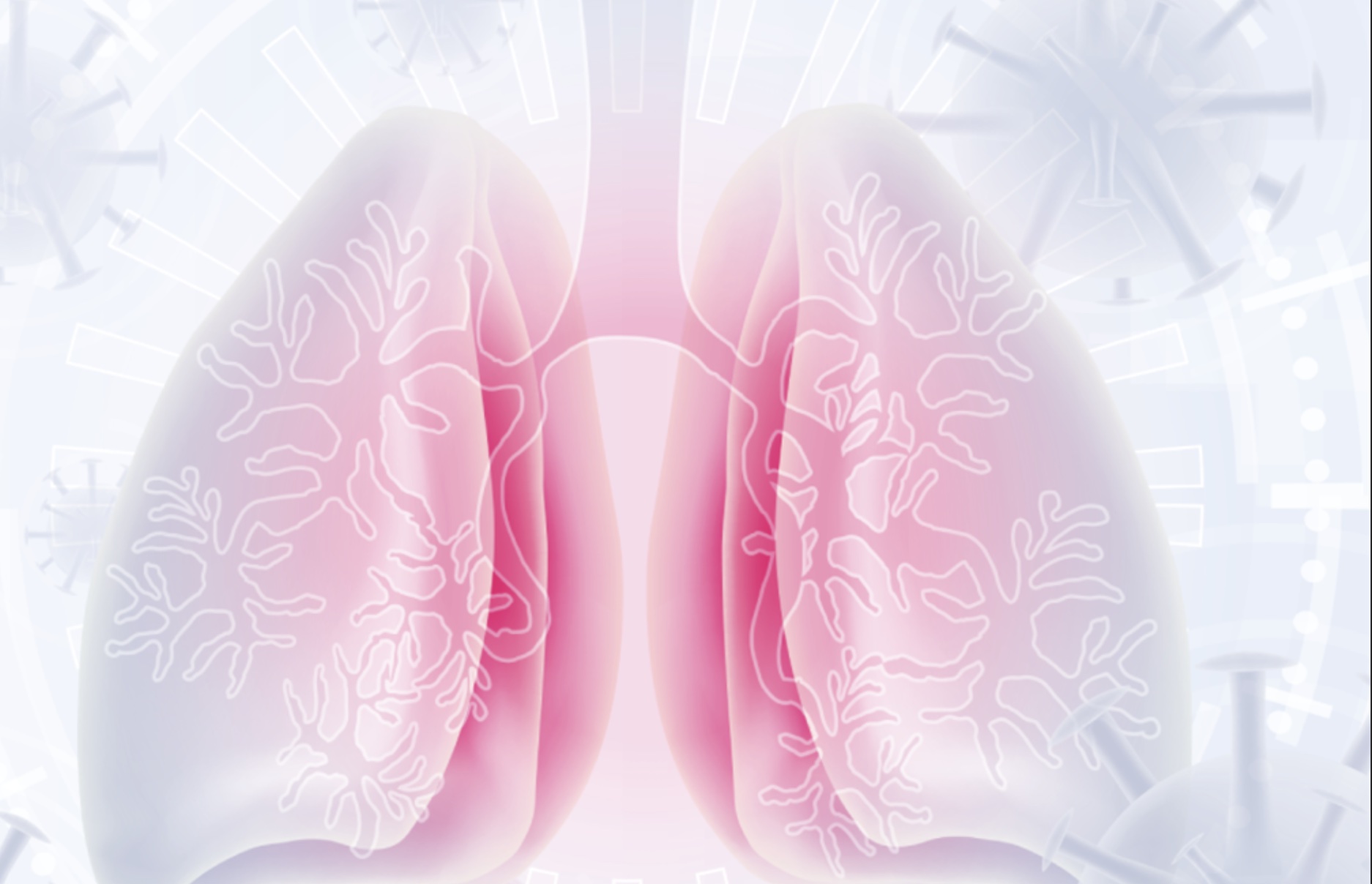
El enfoque adecuado para concienciarse sobre los alérgenos
Vídeo interactivo de eLearning sobre asma alérgica dirigido a especialistas en alergias

L’approccio tempestivo alla sensibilizzazione agli aeroallergeni
Video interattivo di eLearning sull'asma allergico per gli Specialisti Allergologi

Die Sensibilisierung gegen Aeroallergene frühzeitig erkennen und behandeln
Interaktives E-Learning-Video über allergisches Asthma für Allergologen

L’approche opportune de la sensibilization aux aéroallergène
Vidéo interactive d'apprentissage en ligne sur l'asthme allergique pour les spécialistes en pneumo-allergologie

食物アレルギー診療における特異的IgE抗体検査の正しい使い方
2023年3月18日に実施しました共催セミナー 『食物アレルギー診療における特異的IgE抗体検査の正しい使い方』 の内容を一部抜粋してご紹介いたします

Viewアレルギー39 ホームページ用画像データのご案内リーフレット
Viewアレルギー39紹介のためのホームページ用画像データを一新いたしました。インターネットでお申し込みいただくと、ご採用施設に限り画像データを提供しています。

アレルゲンコンポーネントJug r 1(クルミ由来)・Ana o 3(カシューナッツ由来)
アレルゲンコンポーネントJug r 1(クルミ由来)およびAna o 3(カシューナッツ由来)の活用例をご紹介しています。判定フローチャートの目安を掲載しています。

英語版 患者さん向けポスター 「通年ポスター」
通年ポスターの英語版をご用意しました。先生方からのご要望もありPDFデータを準備いたしました。 思わず目で追ってしまう迷路イラストからアレルゲンの症状や紙媒体イラストや写真で紹介しています。 紙媒体でのご用意はございませんのでダウンロードいただきご活用いただけますと幸いです。

アレルゲンコンポーネント Gly m 4(大豆由来)
Gly m 4の活用例を掲載したリーフレットです。 「春季の花粉症患者さんにおける大豆アレルギー合併リスク判定のためのフローチャート」を掲載しております。

炎症性腸疾患(IBD)の診断補助のために 私はこう使う
便中カルプロテクチン検査(FEIA法)は腸管の炎症状態を把握することが可能な検査です。炎症性腸疾患(IBD)の診断補助における検査の具体的な活用例について紹介されています。

潰瘍性大腸炎(UC)病態把握の補助のために 私はこう使う
便中カルプロテクチン検査(FEIA法)は、臨床性能試験においてIBDの内視鏡スコアとの相関性が認められています。潰瘍性大腸炎(UC)の病態把握の補助における検査の有用性と実際の活用方法について紹介されています。

ImmunoCAP Rapid Child: Patientenbroschüre
In dieser Broschüre finden Sie Hintergrundinformationen zu den einzelnen getesteten Allergenen und Tipps, wie Sie diese bestmöglich meiden können.

The timely approach to aeroallergen sensitization
Allergic asthma eLearning interactive video for Allergy Specialists

Uma visão completa do alívio da alergia na atenção primária
Veja como especialistas podem obter uma imagem completa dos sintomas da rinite alérgica de seu paciente.

Guia rápido para uso de teste de IgE específica ImmunoCAP
Tenha uma visão completa dos desencadeantes de alergia de seus pacientes. Veja como solicitar, interpretar e aplicar com confiança os testes ImmunoCAP para obter uma imagem completa.

Cartão de sintomas das vias respiratórias superiores
Um teste de sangue de IgE específica ImmunoCAP é apropriado? Saiba quais sintomas e histórico do paciente deve levar em conta.

Tenha uma visão completa dos sintomas das vias respiratórias superiores
Quatro motivos que mostram porquê é importante identificar as sensibilizações a alérgenos específicos em atenção primária.

Tem a imagem completa?
Cinco principais conceitos errôneos e comuns que os clínicos gerais e pediatras podem ter sobre as alergias.

Phénotypes de l’allergie alimentaire : ce que nous apprend l’allergologie moléculaire
Au cours de cette session, le Docteur Guillaume Lezmi vous aidera à comprendre : le lien entre phénotypes de l’allergie alimentaire et sensibilisations allergéniques moléculaires l’intérêt en pratique d’évaluer les sensibilisations multiples pour prédire le risque clinique.

Recommandations de prise en charge de l’asthme : pourquoi le bilan allergologique est-il incontournable ?
Au cours de cette session, le Professeur Alain Didier, pneumologue-allergologue, directeur du Pôle Voies Respiratoires du CHU de Toulouse, vous permettra de mieux comprendre : Le rôle de l’allergie dans le contrôle de l’asthme, La place et le choix des tests sanguins d’IgE spécifiques dans le bilan allergologique, La conduite à tenir en fonction des résultats

L’allergie au cannabis : exploration du profil de réactivité moléculaire
Au cours de cette session, le Professeur Didier Ebo, vous permettra de découvrir : Les allergies liées à Cannabis sativa et son rôle dans différentes situations cliniques, Le lien entre le cannabis et l'allergie aux fruits

Get the full picture of upper respiratory symptoms
Four reasons why identifying specific allergen sensitizations is important in primary care.

The full picture of allergy relief in primary care
See how general practitioners, like you, can get the full picture of your patient's allergic rhinitis symptoms.

Do you have the full picture?
Five common misconceptions general physicians and pediatricians may have about allergies.

Faites la lumière sur les symptômes des voies respiratoires supérieures
Quatre raisons pour lesquelles l'identification des sensibilisations allergèniques est importante en médecine générale.

Actualités en allergologie moléculaire : 3000 espèces de poissons… et combien d’allergènes ?
Le Docteur Martine Morisset présentera une synthèse des connaissances actuelles sur les allergènes de poisson, pour répondre de façon très pratique à vos questions et vous guider dans le bon usage des tests d’IgE spécifiques

2023 ImmunoDiagnostics Product catalog
Thermo Fisher Scientific is a leading provider of IVD tests for allergy and autoimmune diseases.

Guida rapida all'utilizzo dei test delle IgE specifiche ImmunoCAP
Ottieni un quadro più completo dei sospetti sintomi allergici dei pazienti. Scopri come selezionare, utilizzare ed interpretare con sicurezza i test ematici delle IgE specifiche ImmunoCAP™ per ottenere un quadro più completo.

La gestione delle malattie allergiche nell’ambulatorio del medico di famiglia
Scopri come i medici di famiglia possono ottenere un quadro più completo dei sintomi dei pazienti con rinite allergica.

Ottieni un quadro più completo dei sintomi delle vie respiratorie superiori
Quattro ragioni per cui l'identificazione della sensibilizzazione allergene-specifica è importante già a livello del medico di famiglia.

Card dei sintomi delle vie respiratorie superiori
Quali pazienti manifestano sintomi e presentano un’anamnesi tali da poter prendere in considerazione i test ematici delle IgE specifiche ImmunoCAP?

Lumière sur la prise en charge des maladies allergiques en médecine générale
Découvrez comment obtenir une vision complète des symptômes de rhinite allergique

Guide pratique d'utilisation des IgE spécifiques ImmunoCAP
Mieux comprendre les symptômes d'allergie présumés de vos patients

Avez-vous toutes les informations ?
Quatre doutes couramment exprimés par les médecins généralistes et les pédiatres concernant le diagnostic des allergies

Faites la lumière sur les symptômes respiratoires
Un test sanguin d'IgE spécifiques ImmunoCAP est-il approprié ? Connaître les symptômes et l'histoire clinique du patient à rechercher

Tarjeta de síntomas de las vías respiratorias superiores
¿Es apropiado un análisis de sangre de IgE específica ImmunoCAP? Sepa qué síntomas y antecedentes del paciente debe tener en cuenta.

Obtenga una imagen completa de los síntomas de las vías respiratorias superiores
Cuatro razones por las que es importante identificar sensibilizaciones a alérgenos específicos en atención primaria.

Guía rápida para el uso de la prueba de IgE específica ImmunoCAP
Obtenga una imagen completa de los desencadenantes de alergia de sus pacientes. Vea cómo solicitar, interpretar y aplicar con confianza los análisis de sangre de IgE específica ImmunoCAP para obtener una imagen completa.

La imagen completa del alivio de la alergia en la atención primaria
Vea cómo los médicos generales, como usted, pueden obtener una imagen completa de los síntomas de la rinitis alérgica de su paciente.

¿Tiene la imagen completa?
Cinco conceptos erróneos comunes que los médicos generales y los pediatras pueden tener sobre las alergias.

Verschaffen Sie sich ein umfassendes Bild von Ihren Asthmapatienten
Die Verbindung von Asthma und Allergie

Kurzanleitung zum Einsatz von ImmunoCAP spezifischen IgE-Tests
Machen Sie sich ein umfassendes Bild von den Allergieauslösern Ihrer Patienten. Erfahren Sie, wie Sie ImmunoCAP Bluttests auf spezifisches IgE sicher anfordern, interpretieren und anwenden können, um ein vollständiges Bild zu erhalten.

Verschaffen Sie sich ein vollständiges Bild bei allergischen Symptomen der oberen Atemwege
Vier Gründe, warum die Bestimmung der Allergensensibilisierung beim Hausarzt wichtig ist

Symptome der oberen Atemwege
Ist ein ImmunoCAP spezifisches IgE Bluttest hilfreich? Erfahren Sie bei welchen Symptomen und für welche Patienten der Test weiterhilft.

Sehen Sie das vollständige Bild?
Fünf häufige Missverständnisse, die Allgemeinmediziner und Kinderärzte über Allergien haben können.

Allergiebehandlung beim Hausarzt
Erfahren Sie, wie Allgemeinmediziner wie Sie sich ein umfassendes Bild von den Symptomen der allergischen Rhinitis Ihres Patienten machen können.

Do you have the full picture?
Five common misconceptions general physicians and pediatricians may have about allergies.

Quick guide to using ImmunoCAP Specific IgE testing
Get the full picture of your patients’ allergy triggers. See how to confidently order

Upper respiratory symptom card
Is an ImmunoCAP Specific IgE blood test appropriate? Know which symptoms and patient history to look for.

Get the full picture of upper respiratory symptoms
Four reasons why identifying specific allergen sensitizations is important in primary care.

Quick guide to using ImmunoCAP Specific IgE testing
Get the full picture of your patients’ allergy triggers. See how to confidently order, interpret, and apply ImmunoCAP Specific IgE blood tests to get the full picture.

Get the full picture of upper respiratory symptoms
Four reasons why identifying specific allergen sensitizations is important in primary care.

Upper respiratory symptoms card
Is an ImmunoCAP Specific IgE blood test appropriate? Know which symptoms and patient history to look for.

Do you have the full picture?
Five common misconceptions general physicians and pediatricians may have about allergies.

The full picture of allergy relief in primary care
See how general practitioners, like you, can get the full picture of your patient's allergic rhinitis symptoms.

Rizikové alergeny červeného masa, MUDr. Martin Fuchs
Praktický přístup k alergiím na červené maso a alergie na Alfa-Gal

EAACI guidelines on the diagnosis of IgE-mediated food allergy – Meet the Experts!
Listen to Prof. Santos and Dr. Riggioni talking about the latest EAACI guidelines, published in October 2023: expert insights, practical recommendations, and real clinical cases for accurate diagnosis of IgE-mediated food allergy and patient-tailored treatment

Le malattie autoimmuni tra clinica e laboratorio. Maggiori fattori d’impatto sull’accuratezza diagnostica
Il Dott. Nicola Bizzaro illustra i principali algoritmi diagnostici per le patologie autoimmuni sistemiche e la fondamentale importanza di sensibilità e specificità clinica dei singoli test.

Biomarkers of wheat-related disorders: hot topics and areas of research
The company-sponsored symposium about “Biomarkers of wheat-related disorders” held at the 19th International Celiac Disease Symposium, ICDS, Sorrento, Italy, October 21st, 2022.

Value-added reporting in autoimmune serology
Educational webinar. Prof. Xavier Bossuyt discusses the challenges in autoimmune serology testing and introduces likelihood ratios as a tool to overcome these challenges. The webinar covers fundamental concepts of likelihood ratios and provides guidance on implementing LR reporting in clinical practice.

Likelihood ratio in autoimmune diagnostics: Perspectives from a diagnostic manufacturer.
16th Dresden Symposium on autoantibodies: Nina Olschowka explains why it is important for a diagnostic manufacturer to encourage laboratory specialists to report likelihood ratios. As patient advocates, we support any tool that makes the most of our test results and helps to improve autoimmune disease diagnosis.

Current landscape of LR: General use of LR in diagnosing currently and future rheumatoid arthritis.
16th Dresden Symposium on autoantibodies: Prof. Kevin Deane provides insights on the practical applications of Likelihood Ratios (LR) in both primary and secondary care settings. He emphasizes the value of LR in not only diagnosing rheumatoid arthritis but also in predicting it at an early stage.

LR in autoimmune diagnostics and beyond. Personal experience with LR in practice.
16th Dresden Symposium on autoantibodies: Prof. Xavier Bossuyt discusses the benefits of using interval-specific likelihood ratios (LR) to harmonize assay results and improve clinical interpretation. He shares his own experiences and highlights feedback from clinicians who have already incorporated LR into their daily practice.

LR in rheumatoid arthritis: practical application.
16th Dresden Symposium on autoantibodies: Dr. Lieve Van Hoovels explores the issue of the lack of standardization between rheumatoid factor and anti-cyclic citrullinated peptide antibodies tests in rheumatoid arthritis (RA) patients. She highlights the impact this problem has on accurately classifying RA patients. Given that reference materials alone are insufficient to address this unmet need, she discusses how likelihood ratios can provide additional value.

Value-added reporting in autoimmune serology
EliA Symposium 2023: Dr Lieve van Hoovels explains the value of likelihood ratios in the reporting of autoimmune serology results. Dr van Hoovels uses several examples like ANA, ANCA and ACPA testing to illustrate the value for clinicians.

Connective Tissue Diseases … other than SLE
EliA Symposium 2023: Prof Dr Ulrich Walker describes the clinical presentation of connective tissue diseases and the value of autoimmune serology in the aid of diagnosis.

Strategies for ANA detection
EliA Symposium 2023: Prof Dr Xavier Bossuyt describes the different technologies for ANA detection. He focusses on the differences between Solid-phase assays and Indirect immunofluorescence and reviews the available performance data of the individual tests and the combination of both tests.

CTD patient cases, a report from the clinical routine
EliA Symposium 2023: Dr Silvia Piantoni highlights the importance of serology in four clinical cases of patients with Connective Tissue Diseases.

Follow up on the 2019 EULAR/ACR Classification Criteria for Systemic Lupus Erythematosus (SLE)
EliA Symposium 2023: Prof Dr Reinhard Voll explains the evolvement of the SLE classification criteria over the last decades and highlights the follow-up studies to validate the 2019 SLE classification criteria.

Pro and Con Debate: Time for a change in ANA Screening?
EliA Symposium 2023: Prof Dr Georg Endler and Dr Jan Damoiseaux discuss if it is time for a change in ANA Screening. A Pro/Con Session on the different screening technologies, solid phase assays like the EliA CTD Screen and immunofluorescence tests with HEp2 cells.

UK NEQAS IIA – Hot Topics & Update
EliA Symposium 2023: Dina Patel gives an overview of the educational work of UK NEQAS and explains problem solving with a real world example.

Is there a gold standard for in vitro diagnosis of Systemic Lupus Erythematosus?
EliA Symposium 2023: Dr Aurora Jurado Roger presents a recent study on dsDNA antibody diagnostics and reviews the different technologies available.

Allergic rhinitis: how to identify the primary sensitisation
David presented to his GP with rhinorrhoea, nasal congestion, itching, and sneezing. Find out how the primary sensitisation was identified with the aid of a simple blood test.

Allergic rhinitis: from nasal symptoms to accurate diagnosis
Natasha presented to her GP with nasal congestion, itching, and discharge. Find out how an accurate diagnosis of allergic rhinitis was reached, including allergen sensitisations.

Baked milk: Identifying patients who can tolerate baked milk
Elizabeth is allergic to milk, but may now be able to eat foods containing baked milk without an allergic reaction. See how allergen sensitization testing can help her get answers.

Unpeeled Fruit: Improve risk assessment by testing with allergen components
Maria was rushed to the emergency room after eating an unpeeled apple. See how testing with allergen components can help determine her risk of a severe reaction in the future.

Apple and Birch Pollen: What's the connection?
Two teens with a birch pollen allergy visit their healthcare provider after experiencing oral symptoms when eating apples and rhinitis during spring. See what's revealed after testing.

Pollen allergy: Choosing the right pollen for SIT therapy
Two men suffer from recurrent, severe rhino-conjunctivitis in early spring. Their healthcare provider decides to test using grass and birch pollen components before considering SIT.

Soy allergy nuance: Differentiating between a clinical soy allergy and a pollen-related soy allergy
Two kids have a history of birch and soy allergy, both visit their healthcare professional after experiencing rhinitis during pollen season and dry skin. New test results reveal more to their stories.

Outgrowing egg allergy: Identifying a patient whose egg allergy is resolving
Jill’s parents removed egg from her diet without ever having her tested. See how specific IgE testing may help determine if she can now tolerate egg.

Components and OAS: Diagnosis supported by molecular allergology increases the probability of appropriate SIT treatment
Paul has a history of rhino-conjunctivitis, episodes of asthma, and oral allergy syndrome when eating some fruits and vegetables. Will testing using grass pollen components lead to answers?

Pollen Allergy: Identifying the primary sensitization to increase the probability of successful SIT outcome
Two adults visit their healthcare provider for additional insight into their pollen allergies. Tests using grass pollen components helped lead to appropriate management plans.

Hazelnut and Cross-Reactivity: Help patients understand their hazelnut allergy and symptoms due to cross-reactivity
After eating a bowl of cereal, 8-year-old Sophie was covered in large hives. Discover how allergen sensitization testing helped discover the cause of her reaction.

Hazelnuts and OAS: Testing with allergen components helps aid in dietary management of hazelnut allergic patients
A boy with a history of rhino-conjunctivitis visits his healthcare provider after developing oral symptoms, and urticaria after eating a piece of cake. Testing using components helps reveal more.

Milk allergy nuance: Making a precise assessment in the case of milk allergy
Antonio and Isabel were both diagnosed with milk allergy. But allergies can change over time—can either of them now tolerate milk?

Milk components: Improved risk assessment when testing with allergen components
Alice has been diagnosed with a milk allergy—see how allergen sensitization testing can determine how likely she is to tolerate milk now.

Outgrowing milk allergy: Identifying a patient whose milk allergy is resolving
A girl with a history of milk allergy visits her provider after accidentally eating ice cream. A test using milk components could reveal more to her story.

Outgrowing Egg Allergy: Tracking the development of egg tolerance over time
Charlie was diagnosed with an egg allergy as an infant, but recently ate egg without having a reaction. See how specific IgE testing may help determine if he can now tolerate egg.

Persistent egg allergy: Evaluate and enforce the risk
Thomas has suffered severe reactions due to an egg allergy several times. Find out how allergen sensitization testing can help him take his allergy seriously.

Peach and Birch Pollen: Testing with allergen components enables risk assessment and helps to explain symptoms due to cross-reactivity
A girl with a history of seasonal rhino-conjunctivitis and oral itching when eating peaches goes to see her healthcare provider. Read how testing using peach and birch allergen components helped.

Peanut allergy and cross-reactivity: Differentiating between symptoms caused by clinical peanut allergy and symptoms caused by cross-reactivity
Caroline and Emma were both diagnosed with peanut allergy. Find out how allergen sensitization testing can show if either of them runs an increased risk of severe reaction to peanuts.

Peanut, tree nut, and pollen: Better peanut allergy risk assessment when testing with allergen components
See how allergen sensitization testing helped Rudi determine his risk of severe reaction to peanut and tree nuts.

Soy allergy: Using components to get the full picture
A boy with a peanut and birch allergy visits his healthcare provider after experiencing symptoms after eating food that contains soy products. Read how a test using soy components helped.

Peanut components: When it comes to peanut allergy, precision and proteins matter
After a reaction, Tim’s parents removed peanut from his diet without having him tested. Find out how specific IgE testing can show if he has a clinical peanut allergy.

Red meat allergy: Understanding the diagnosis of an alpha-Gal induced red meat allergy
A woman with no history of allergy visits her healthcare provider after experiencing generalized urticaria and anaphylaxis. A test for alpha-Gal mediated meat allergy could lead to answers.

Rheumatoid arthritis: Differentiating between forms of crippling arthritis
At 32 years old, Emma is experiencing joint pain and fatigue. See how serological testing can help confirm a diagnosis of Rheumatoid Arthritis.

Systemic reactions: Testing can help find the underlying cause
A boy with a birch allergy visits his healthcare provider following a systemic reaction after eating a shrimp salad, glass of soy milk and was exercising beforehand. Read how testing helped.

Baked Egg: Improving characterization and management of egg allergic patients
Andrea and Sylvia were both diagnosed with egg allergies as infants. Will their test results change over time?

Cow’s milk allergy diagnosis: a step-by-step guide
Read an evidence-based guide to the diagnosis of cow’s milk allergy and learn about the roles of laboratory tests, elimination diets, and oral food challenges.

Egg allergy diagnosis: a step-by-step guide
Read an evidence-based guide to the diagnosis of egg allergy and learn about the roles of laboratory tests, elimination diets, and oral food challenges.
Results Found:


